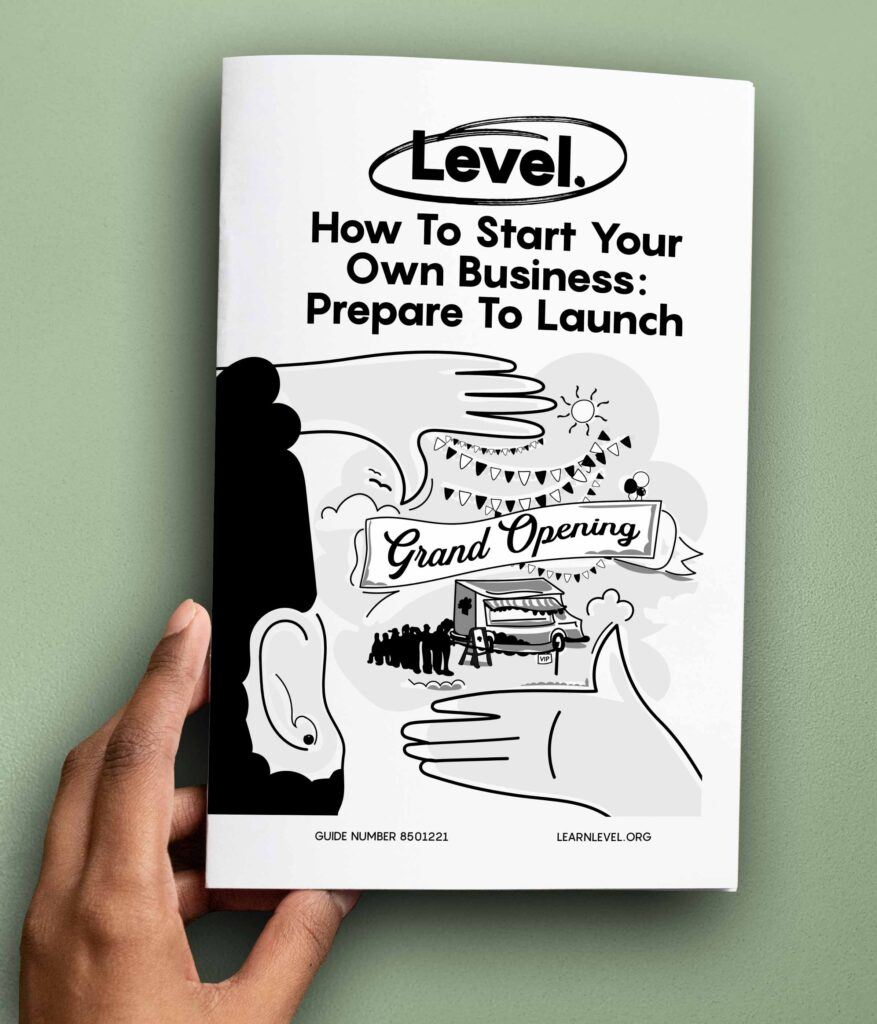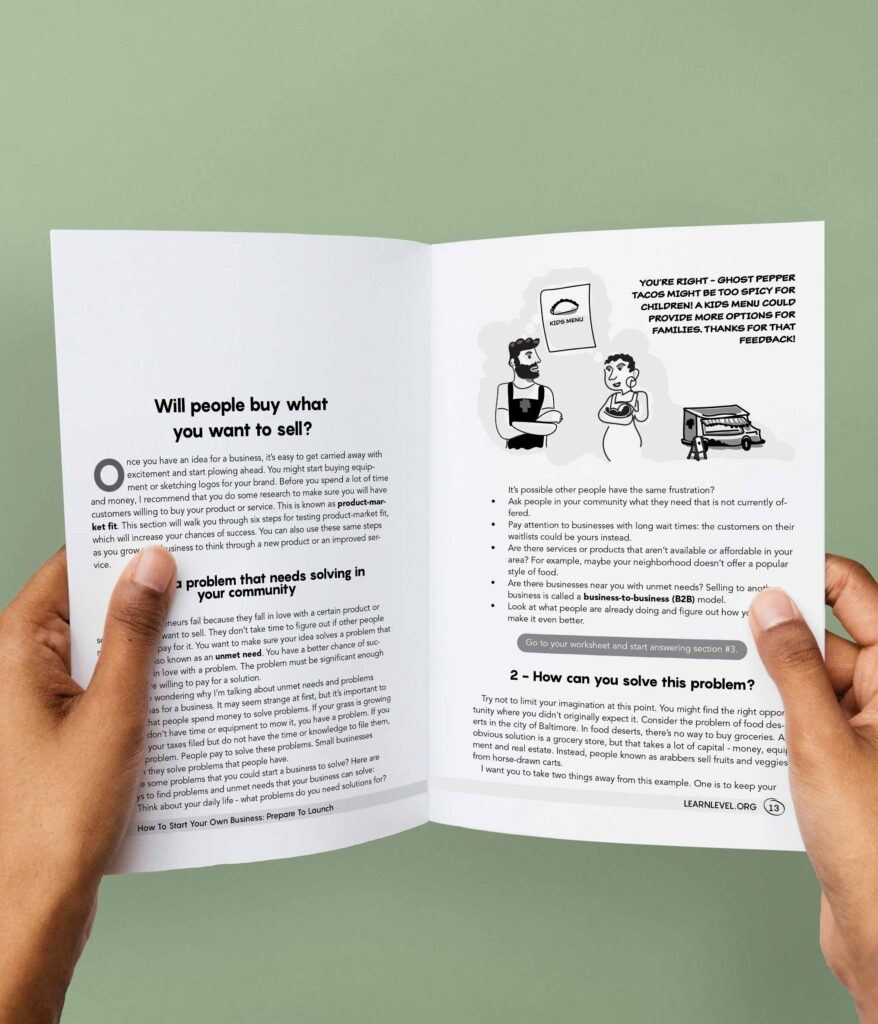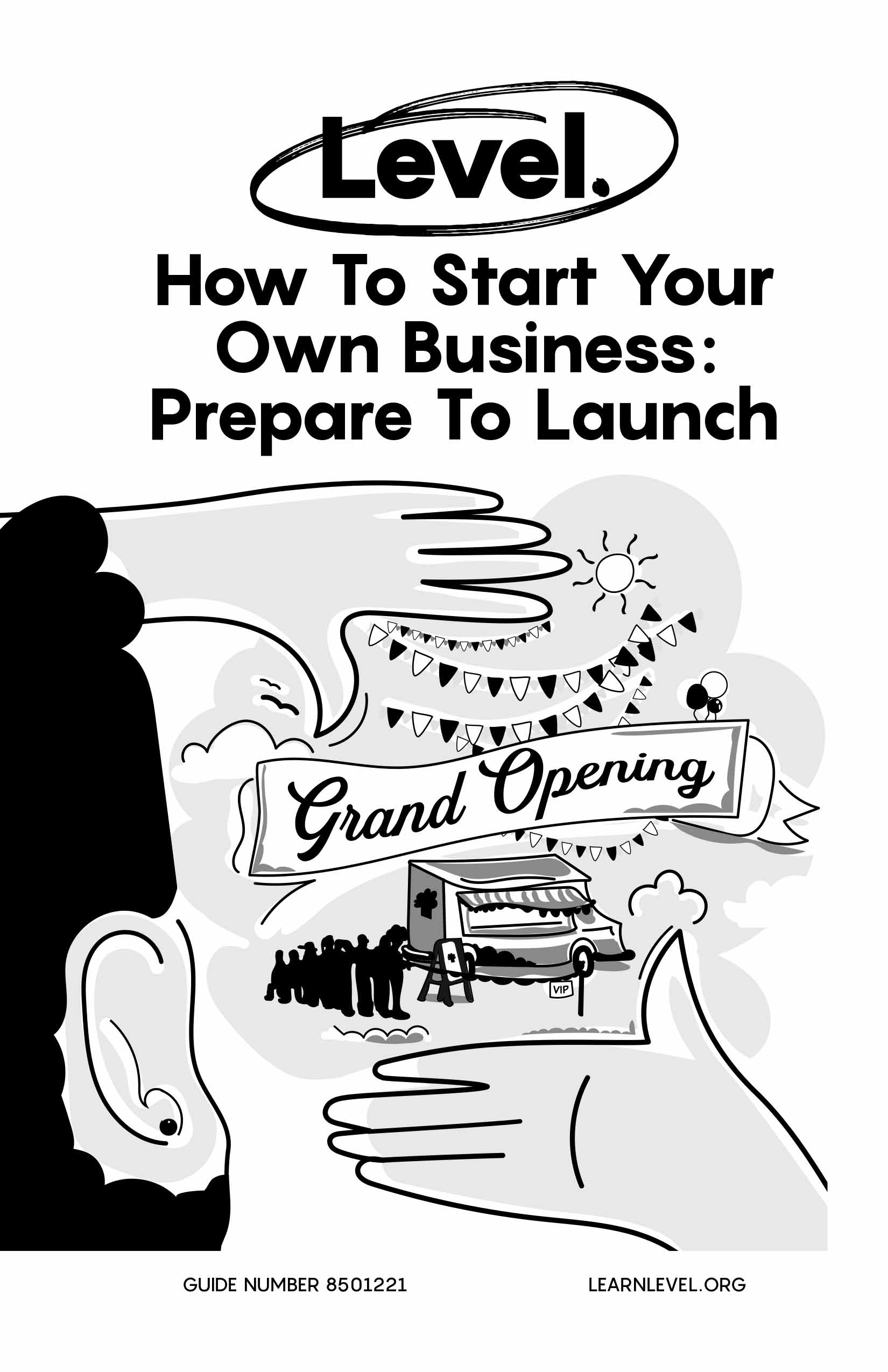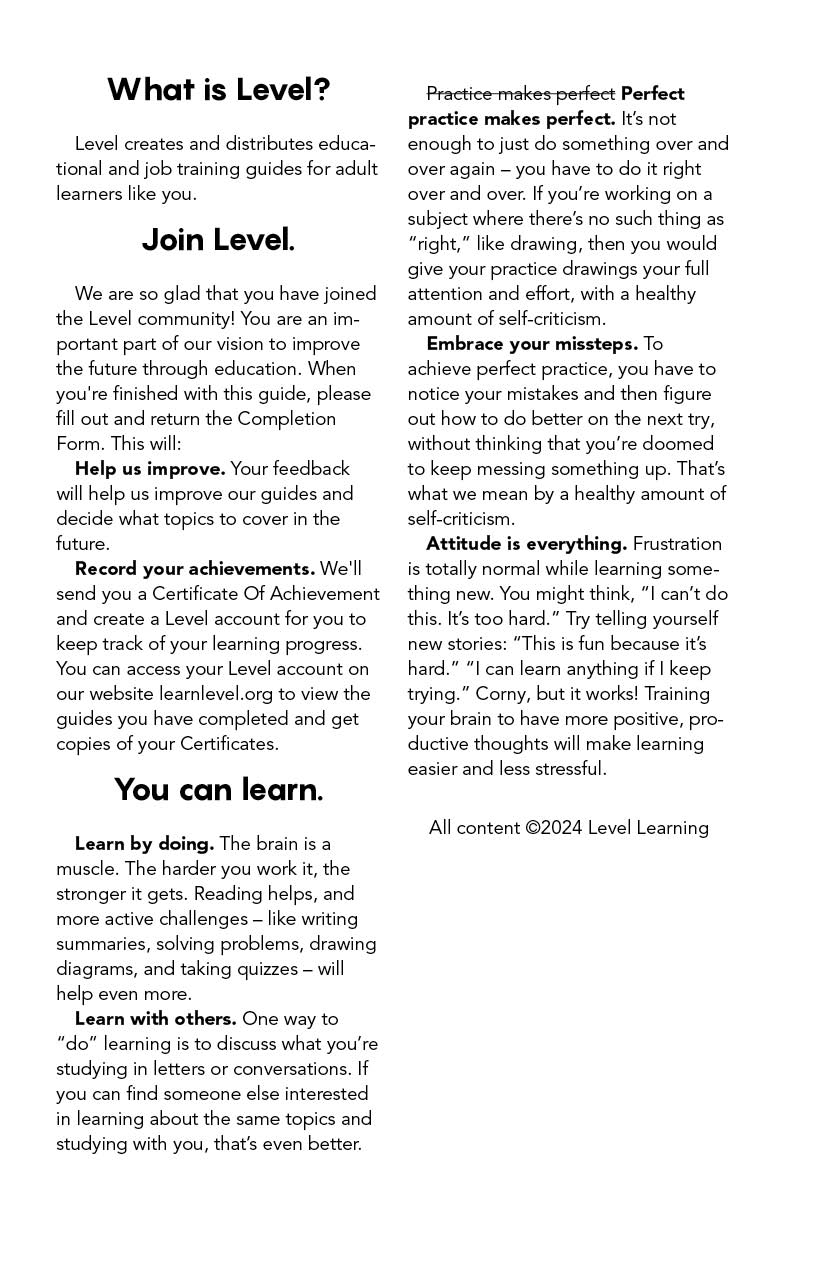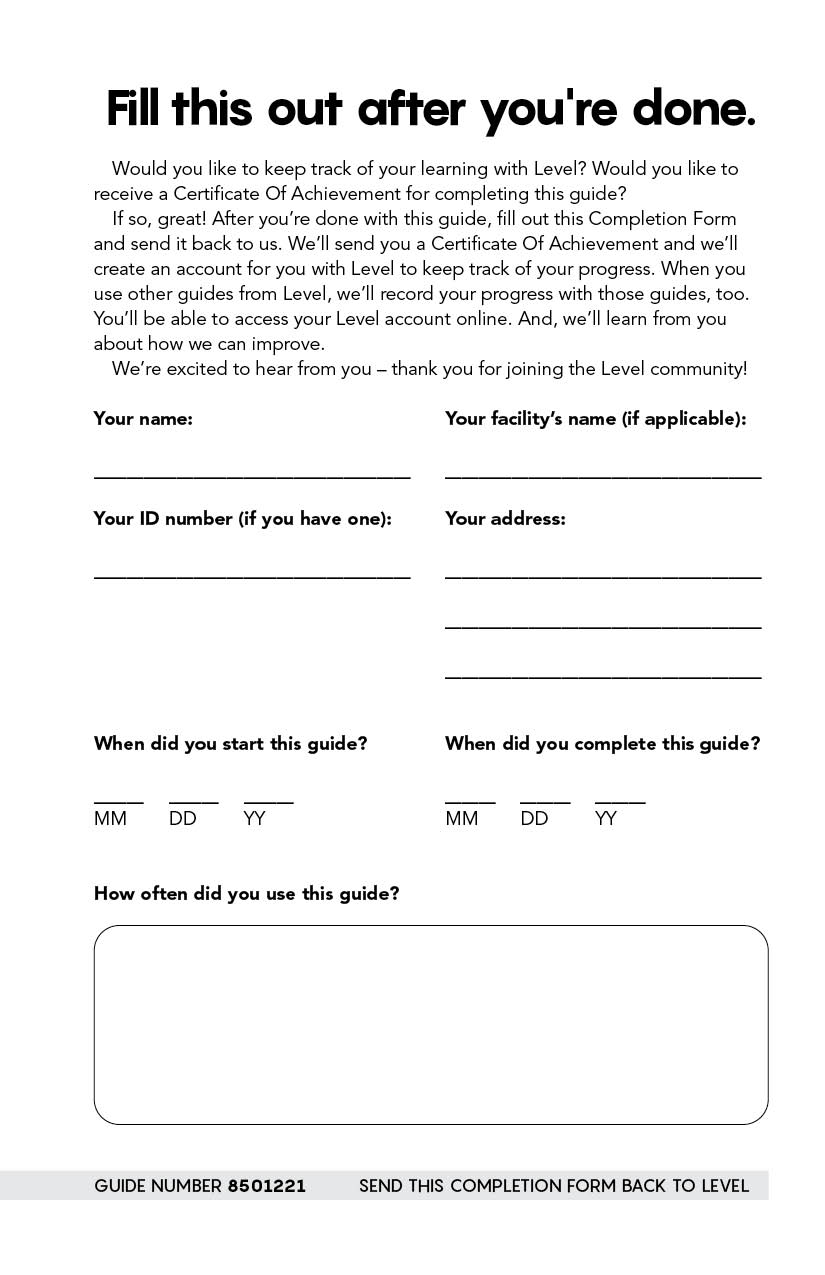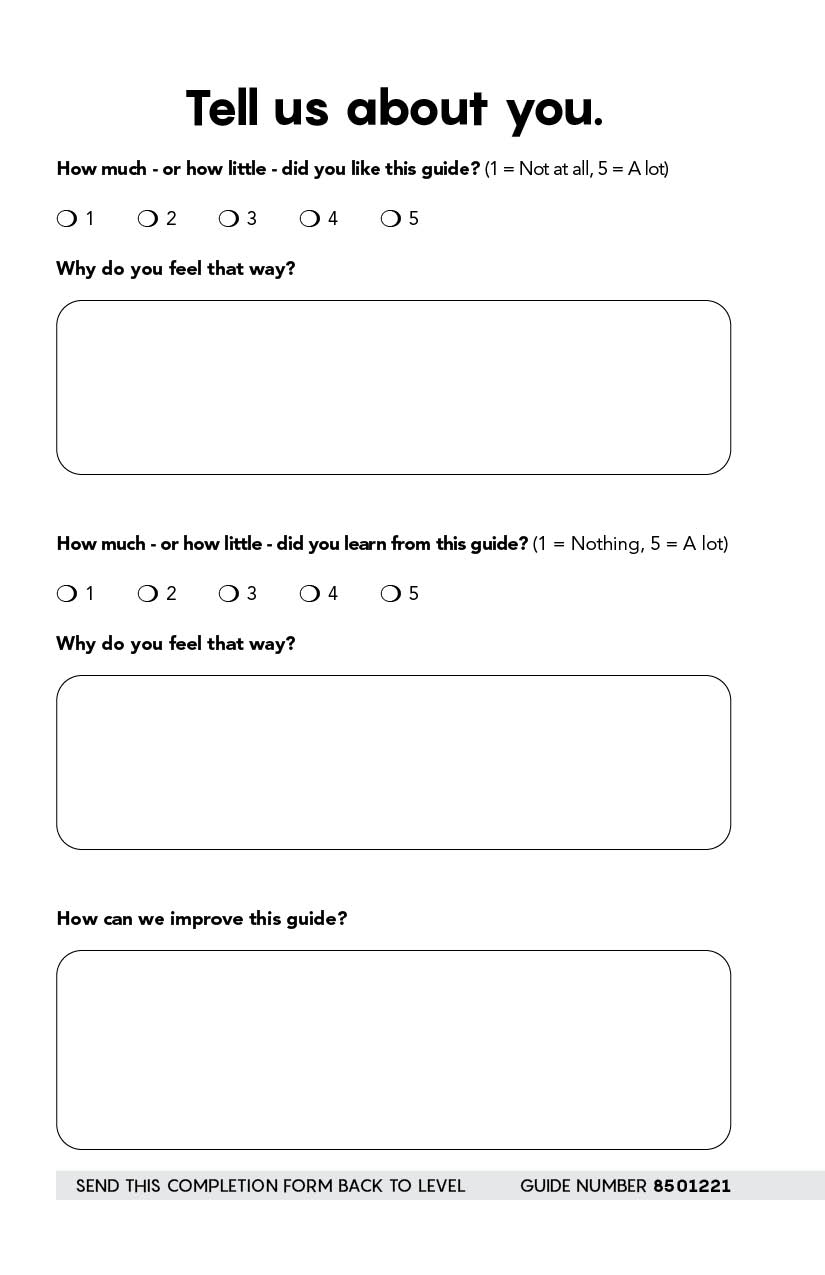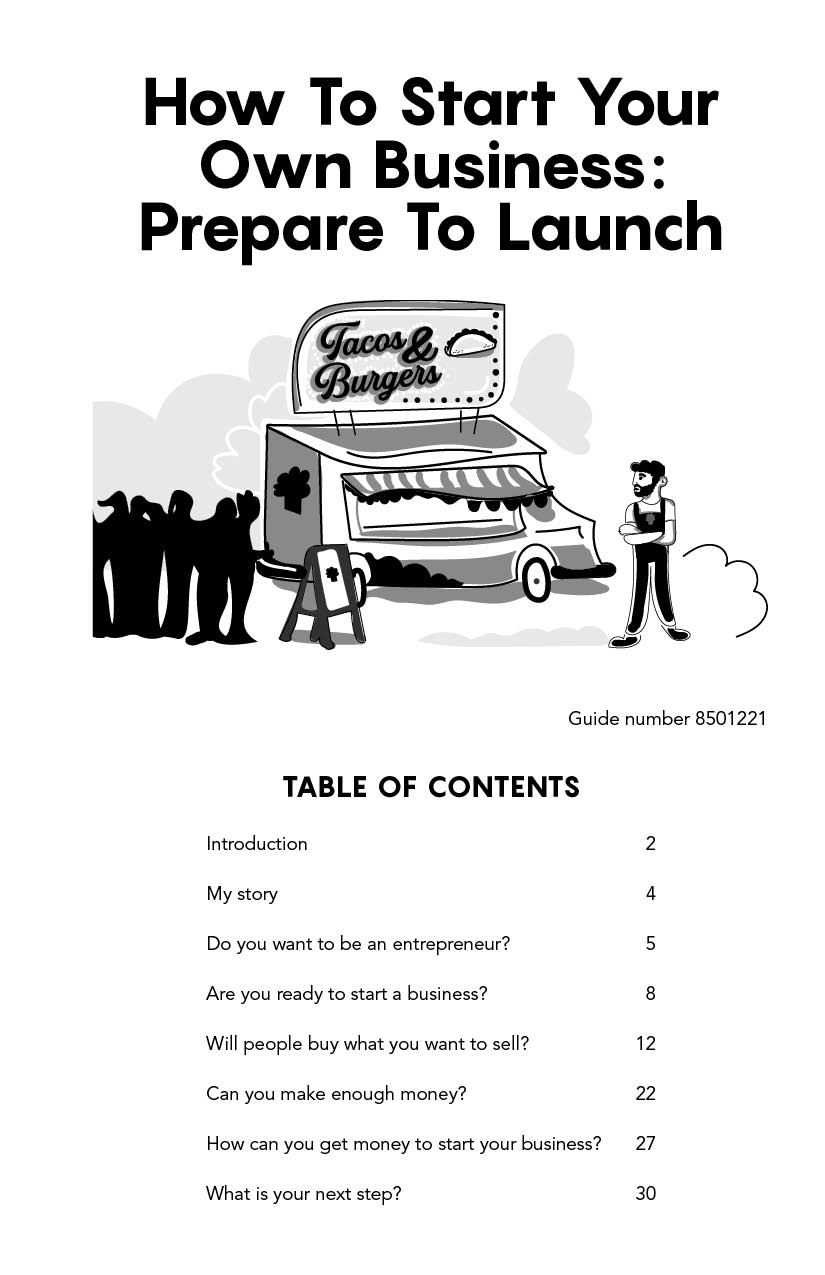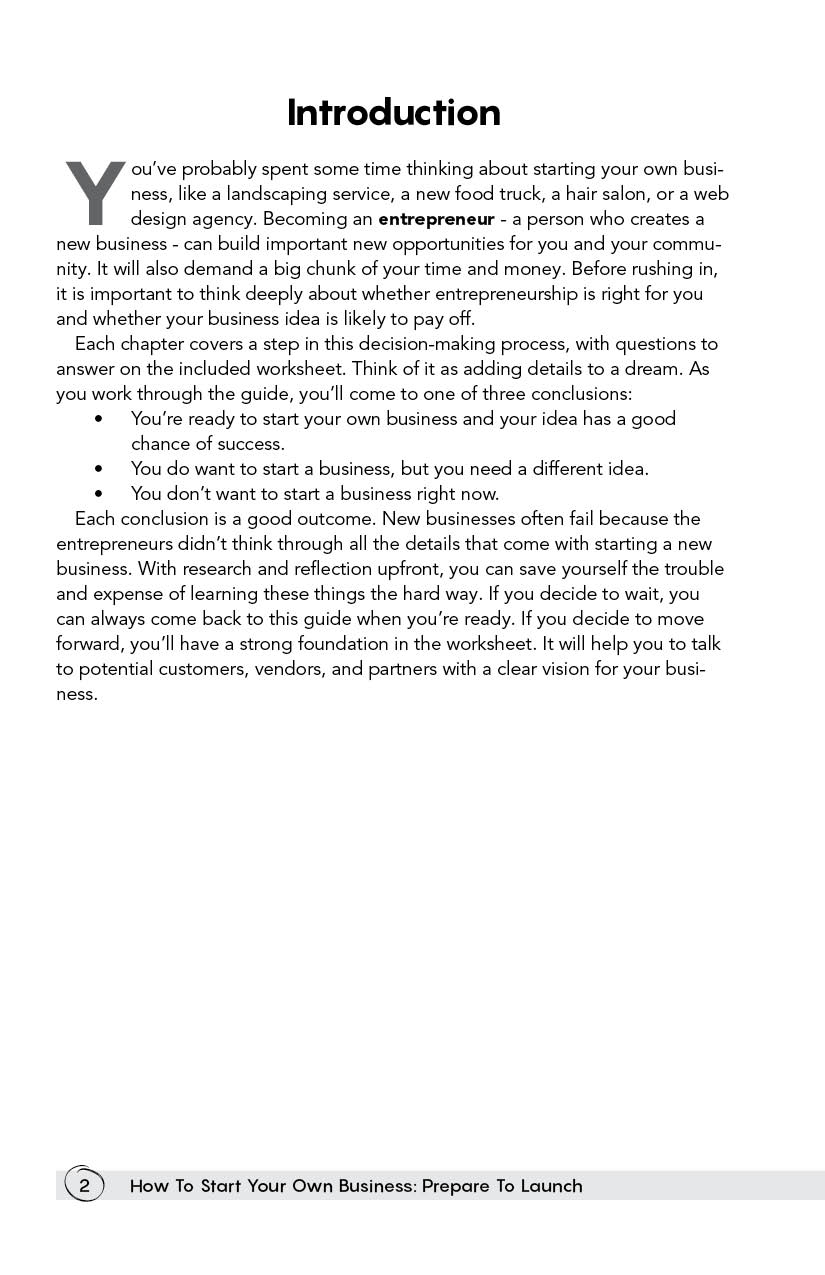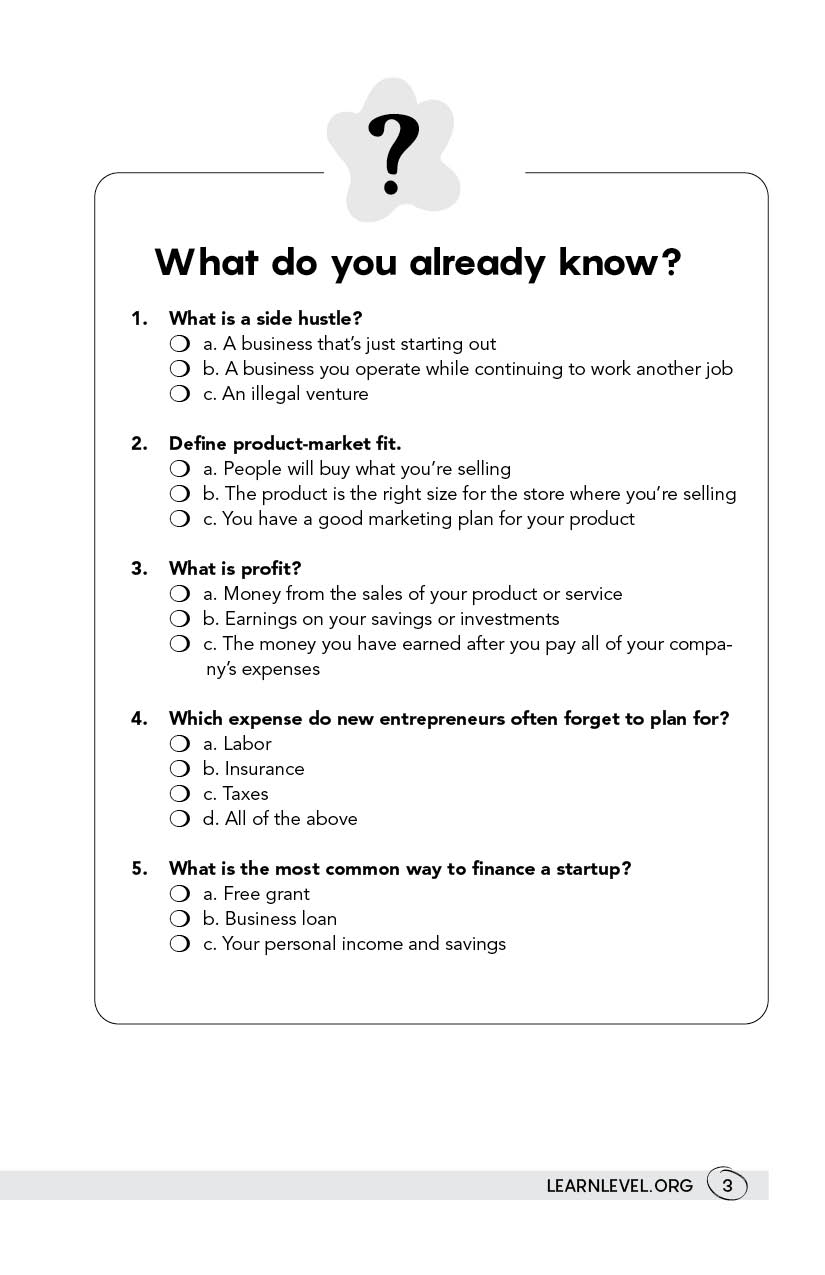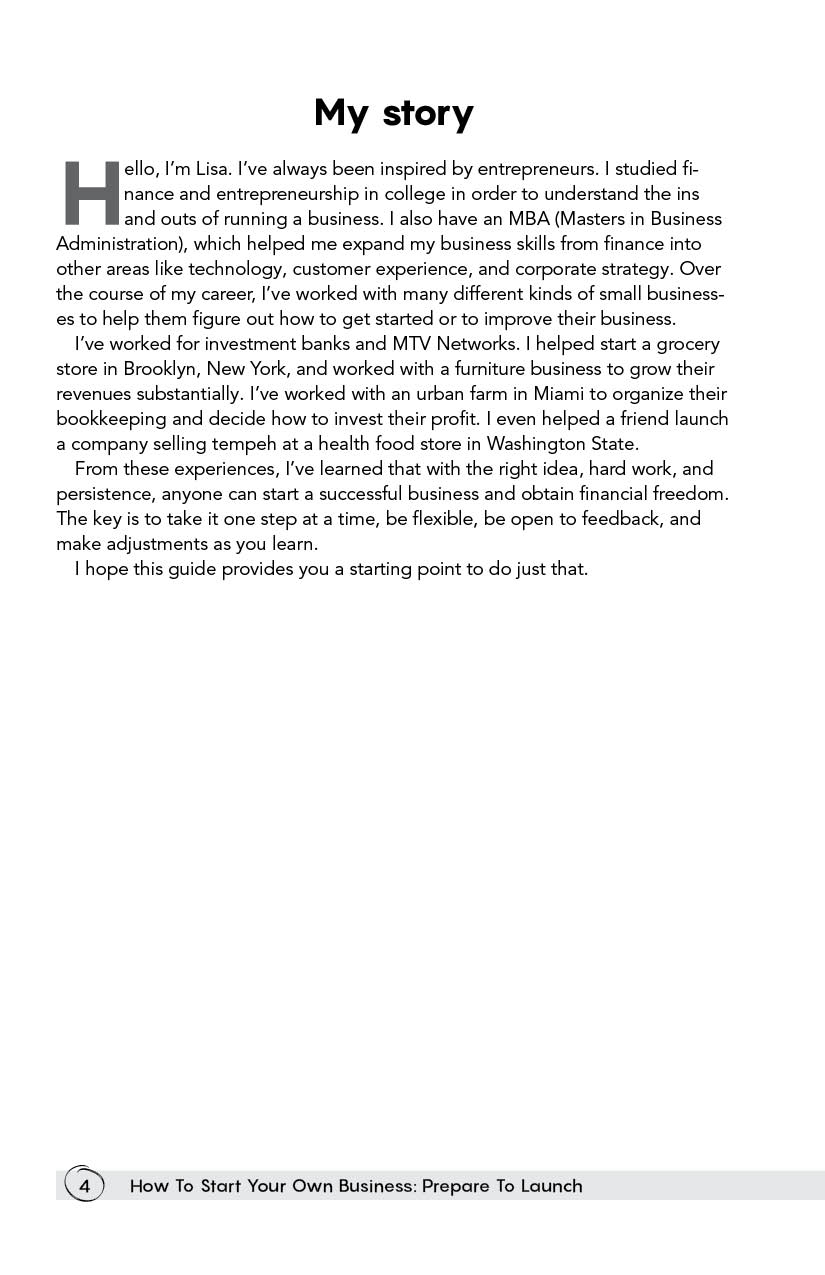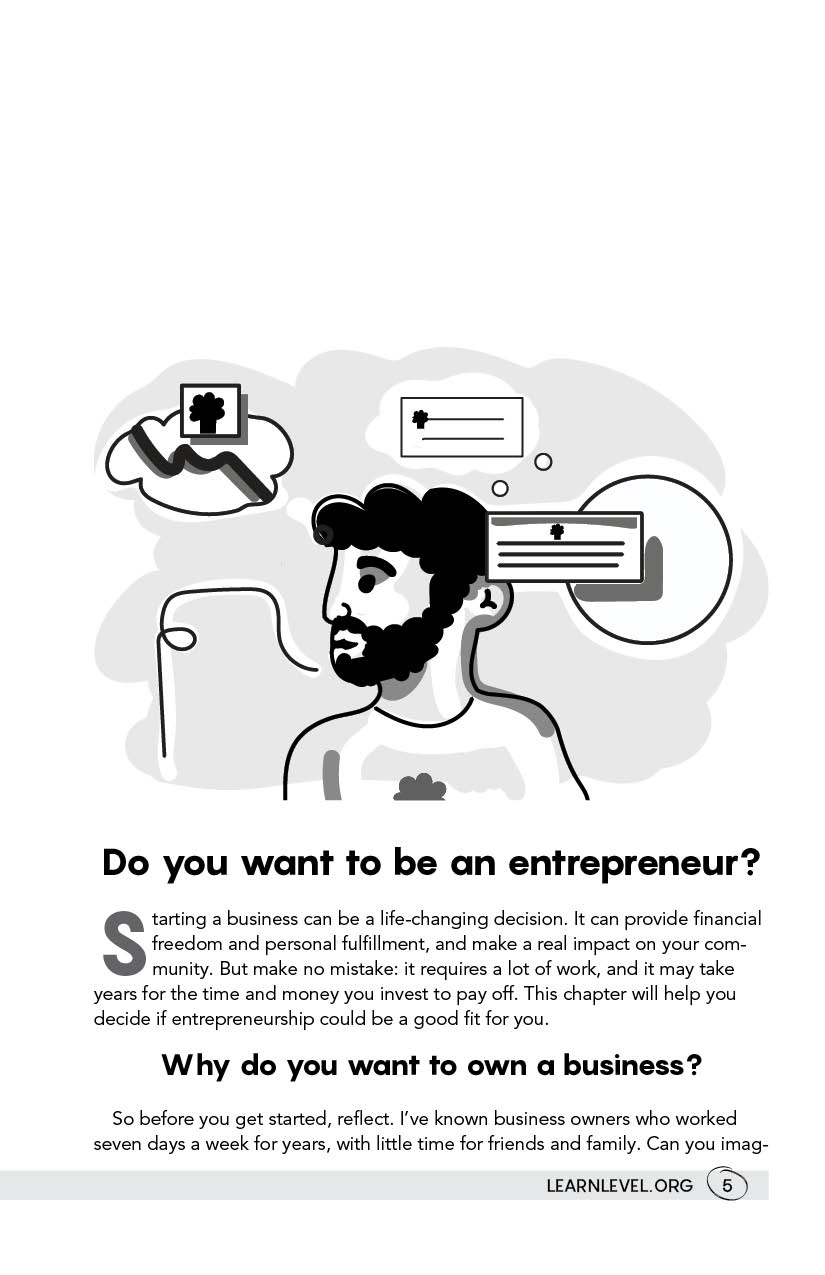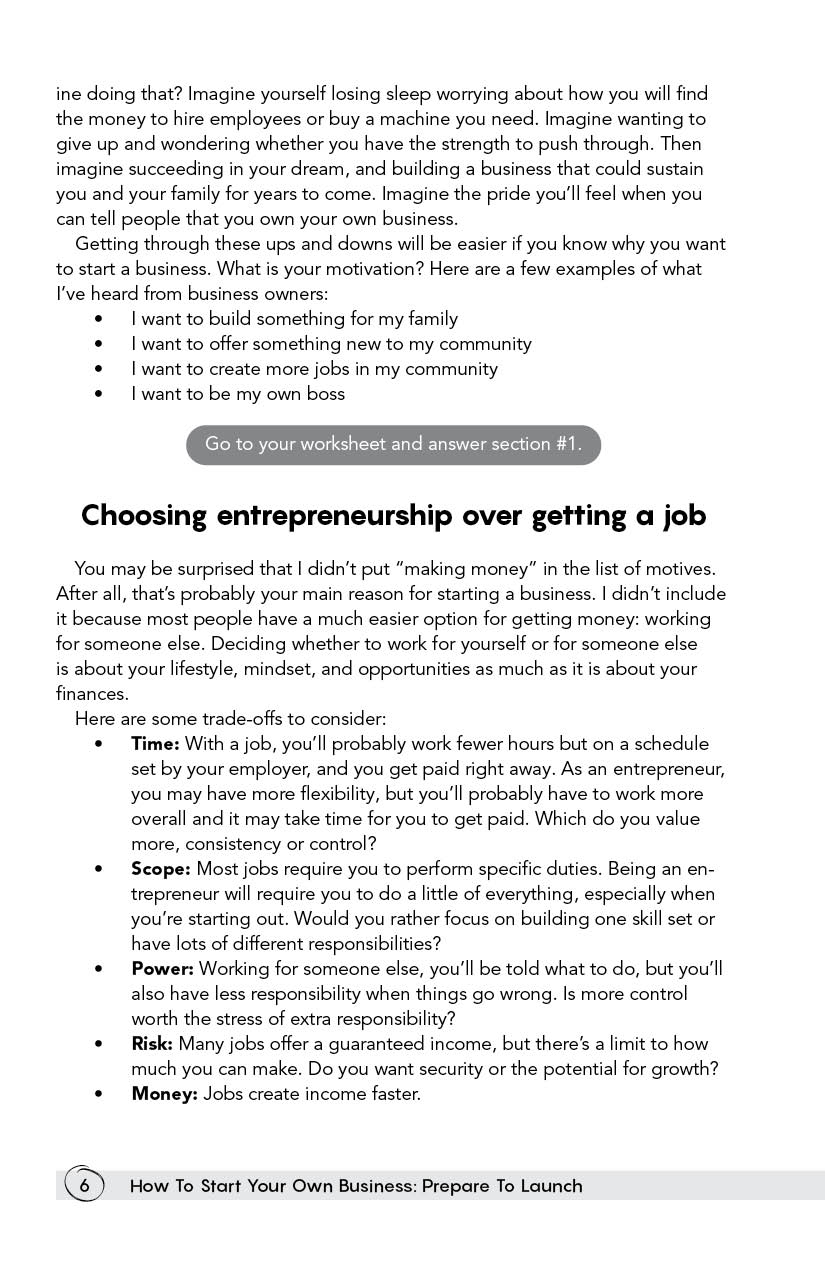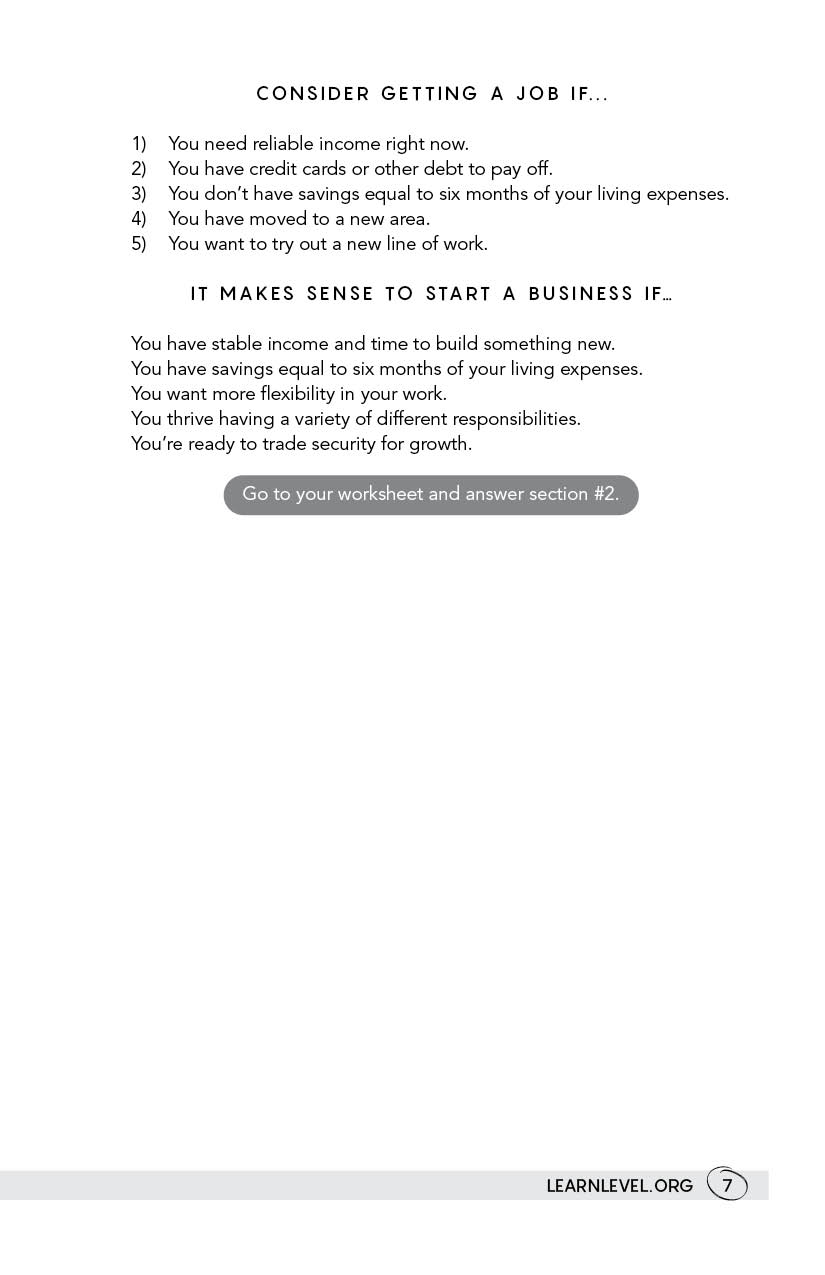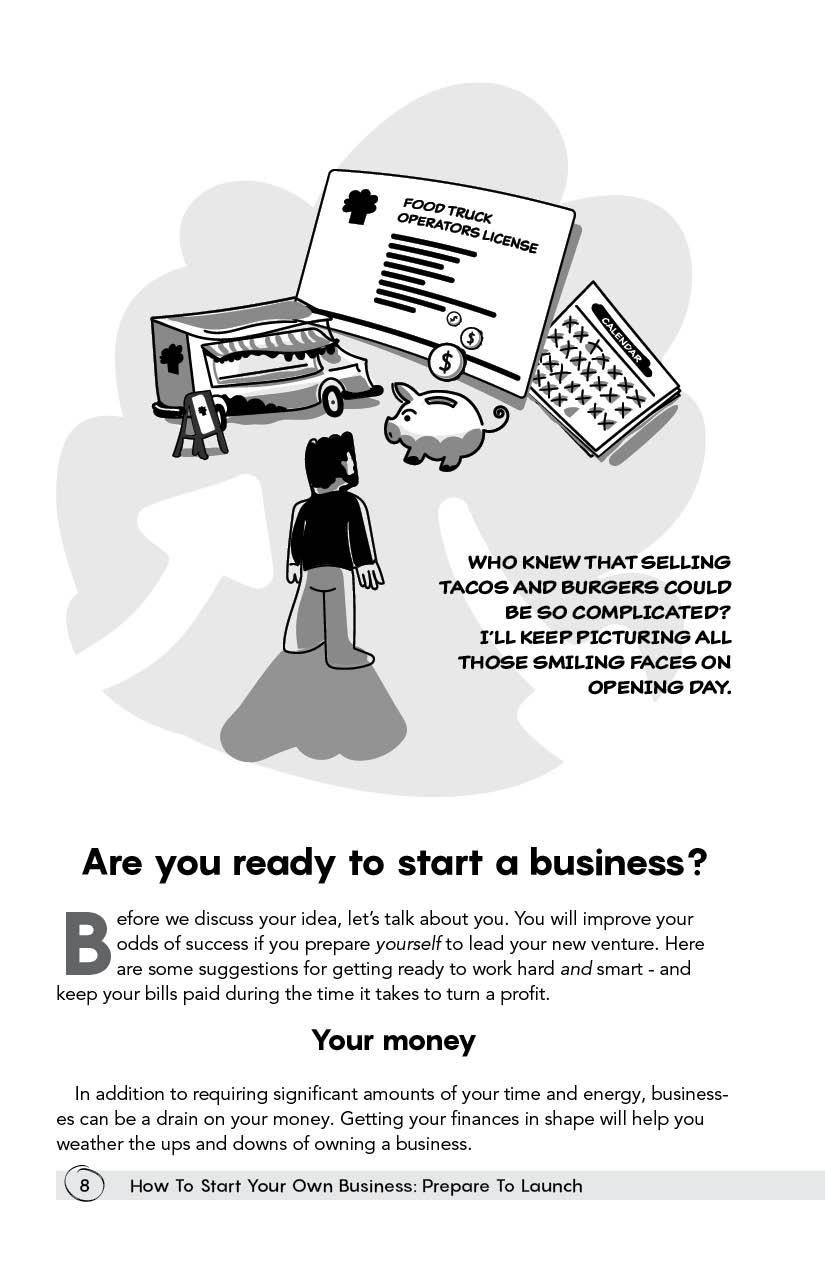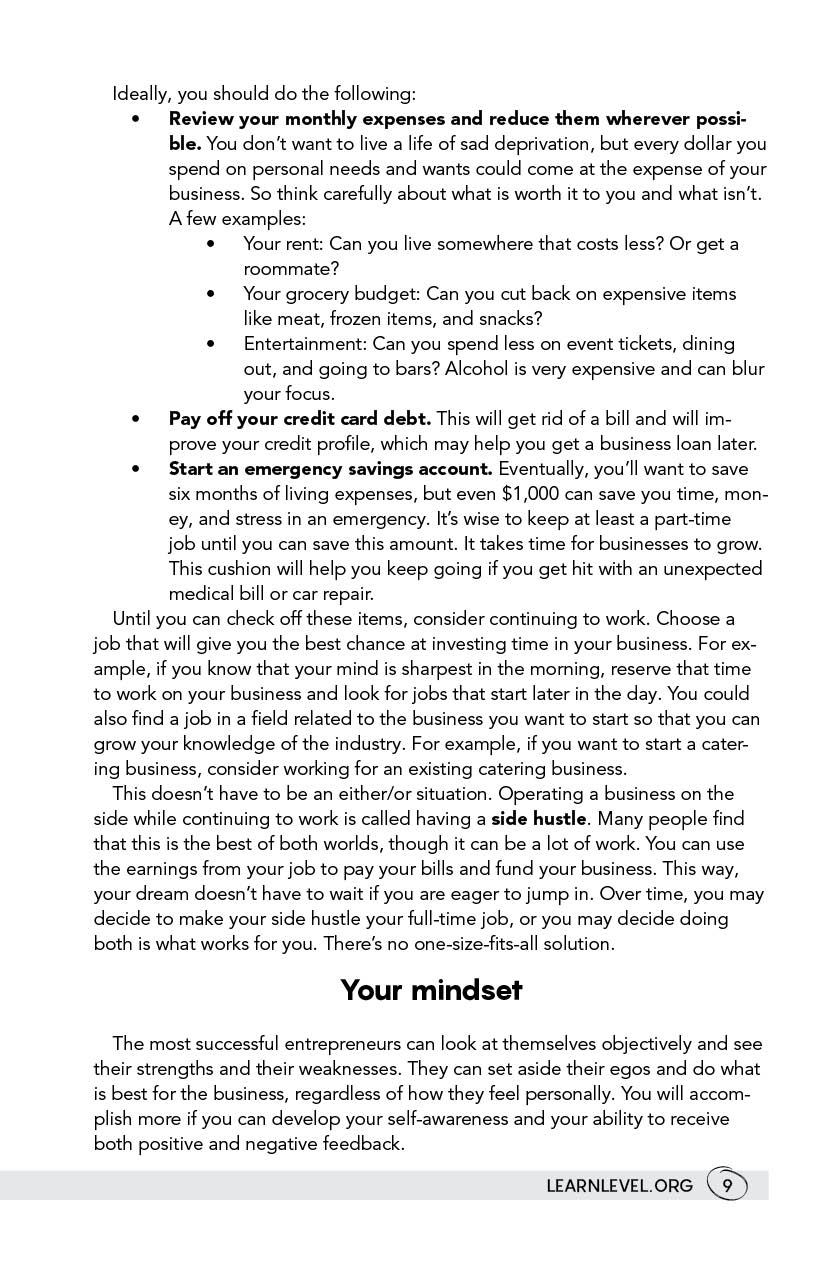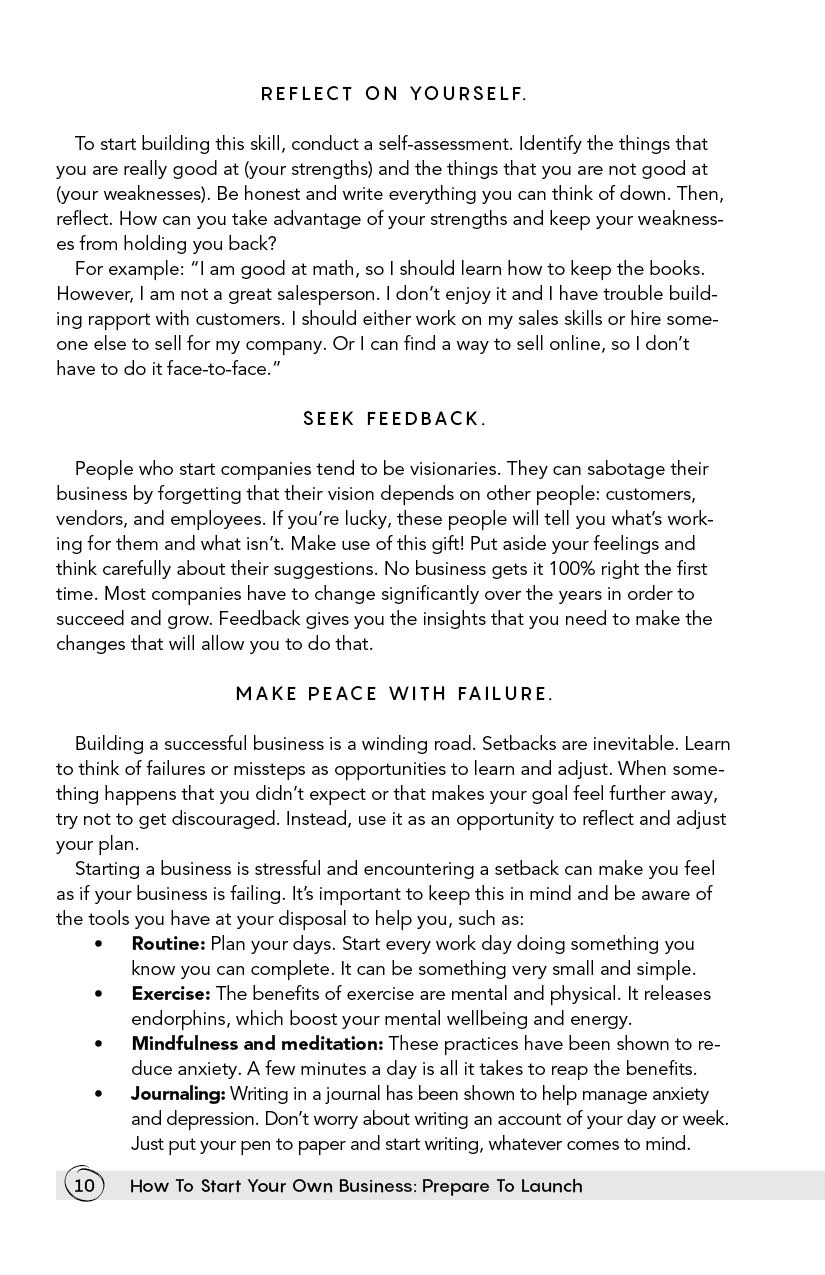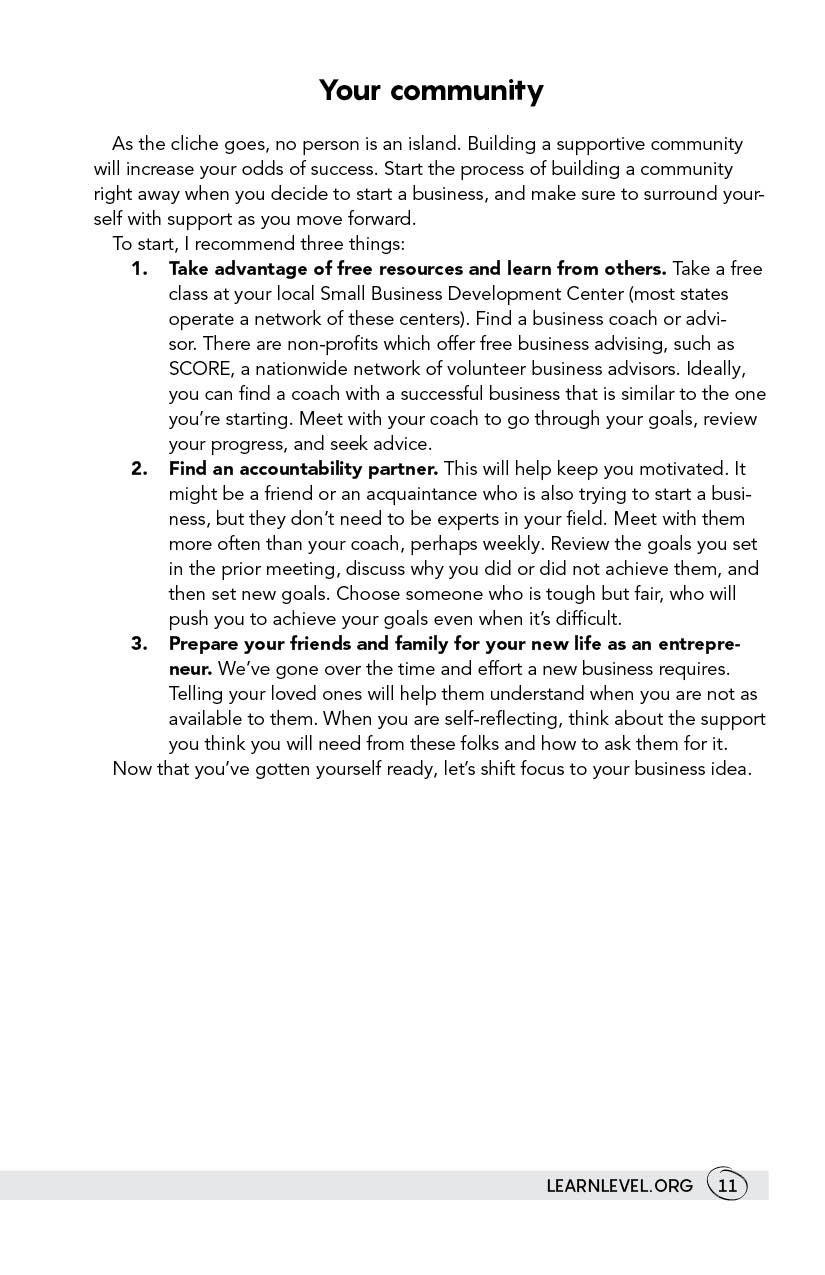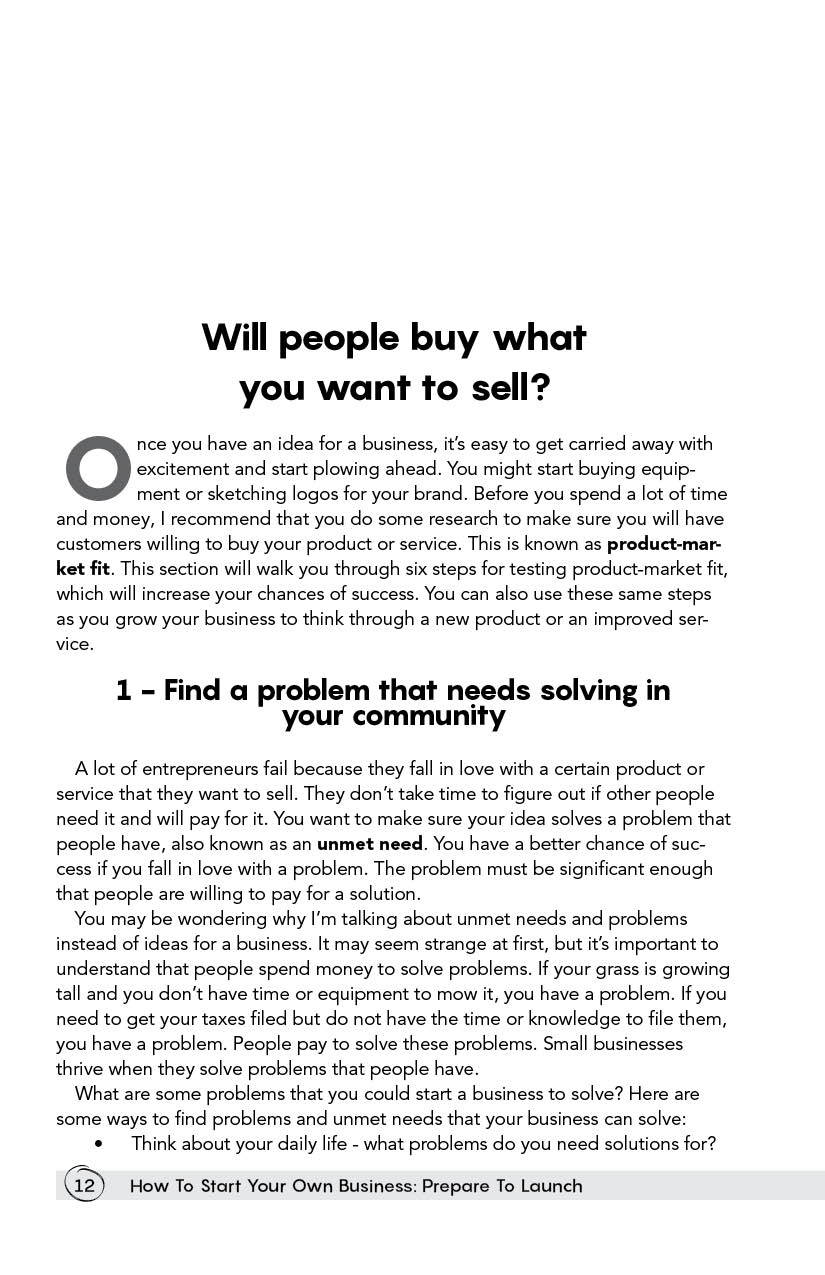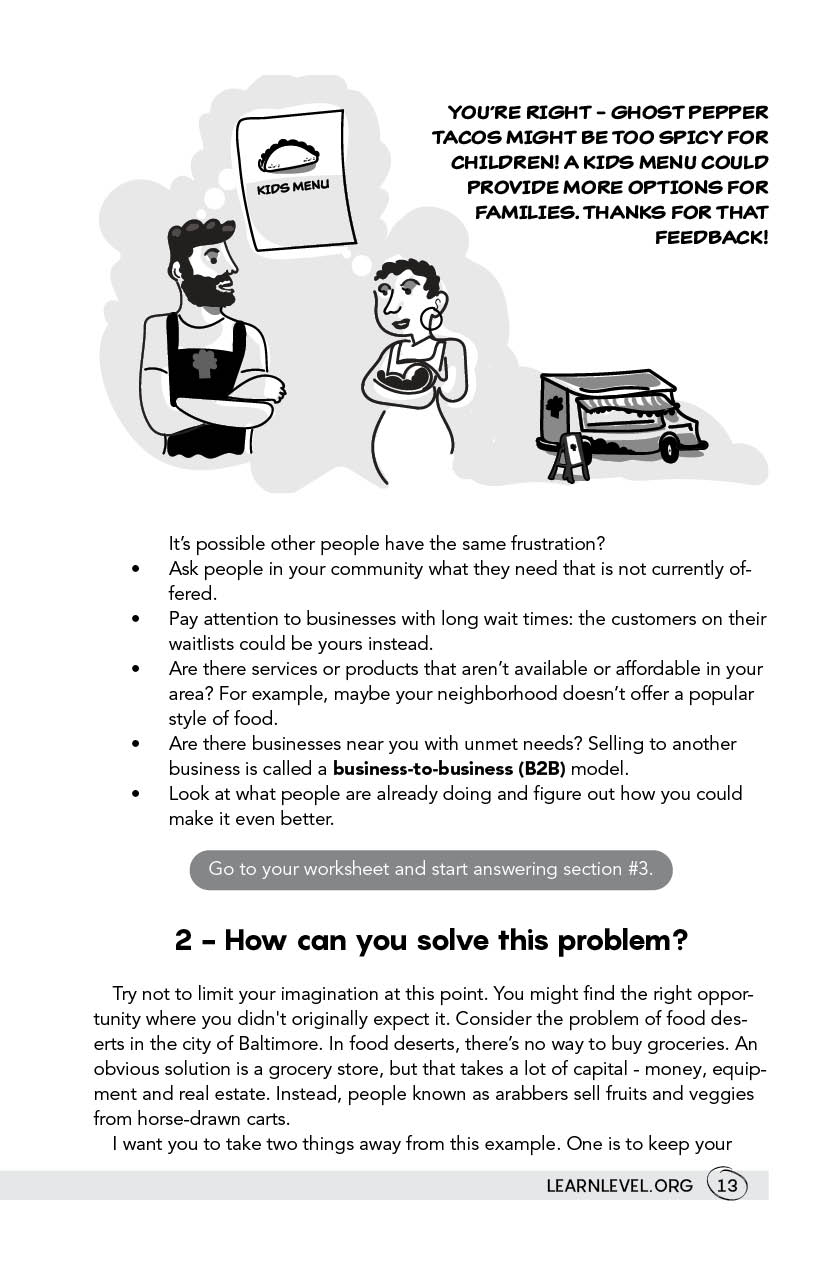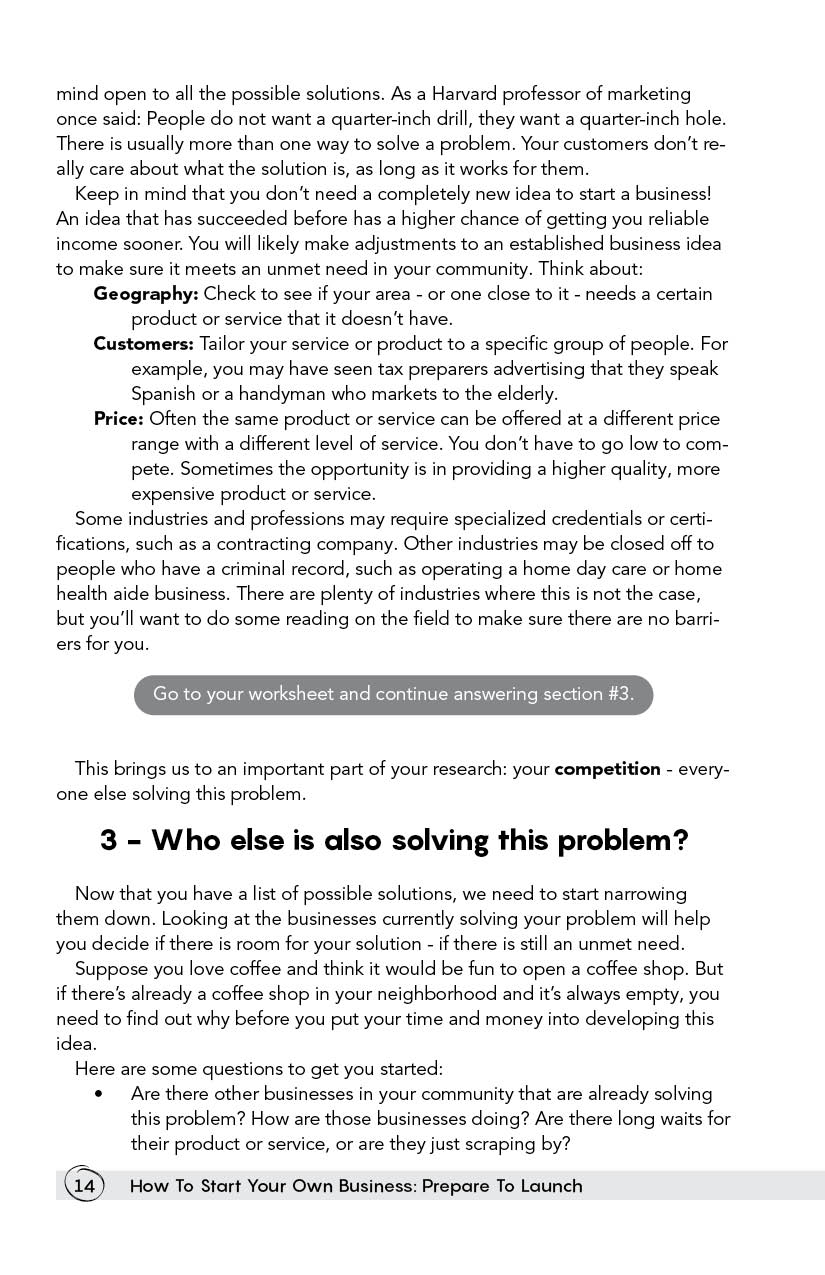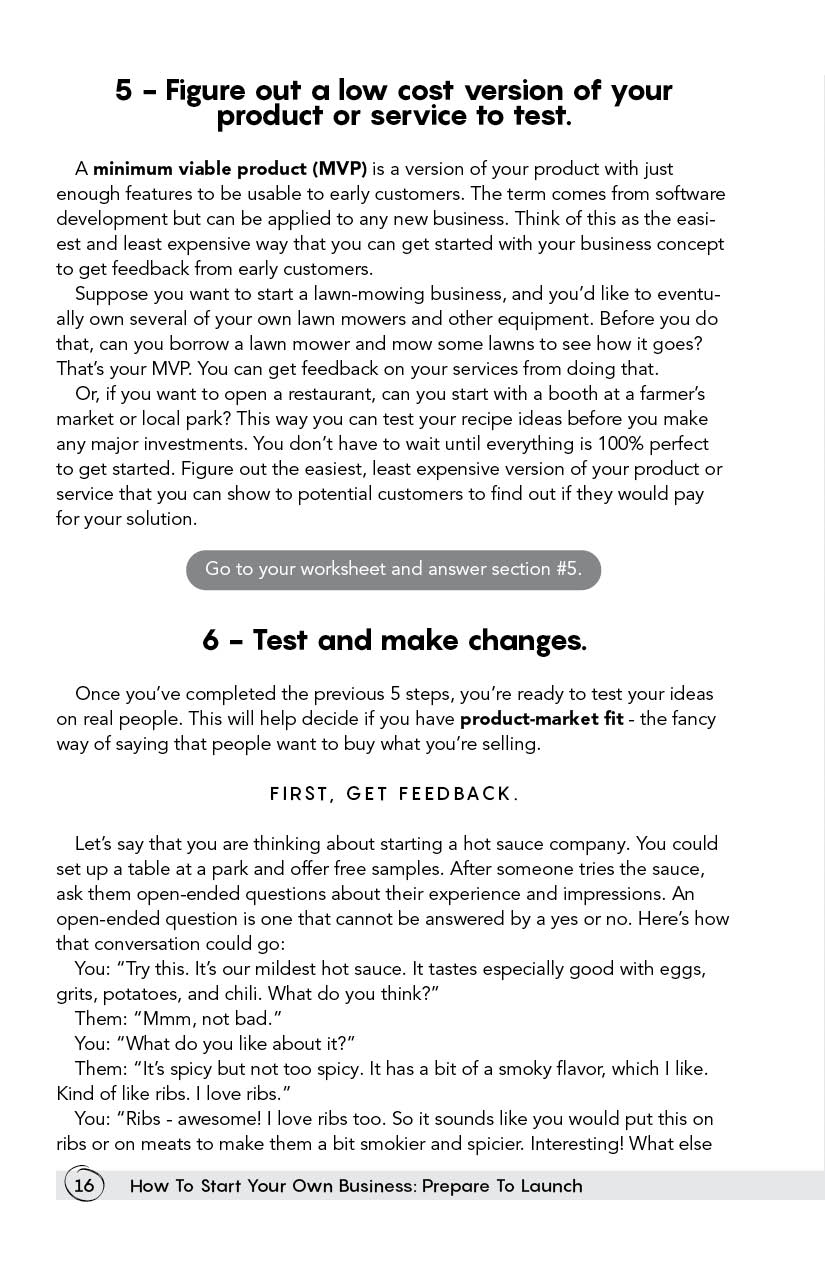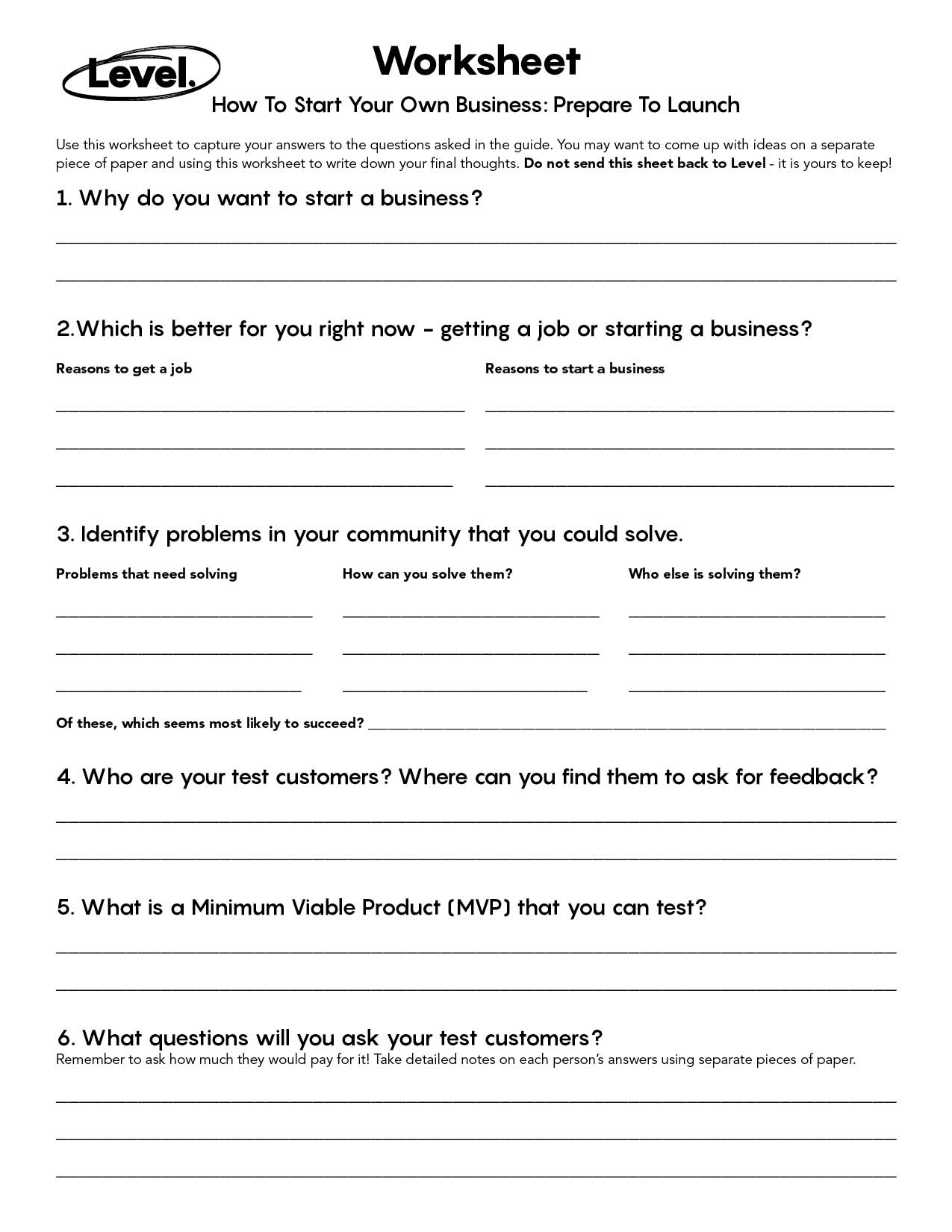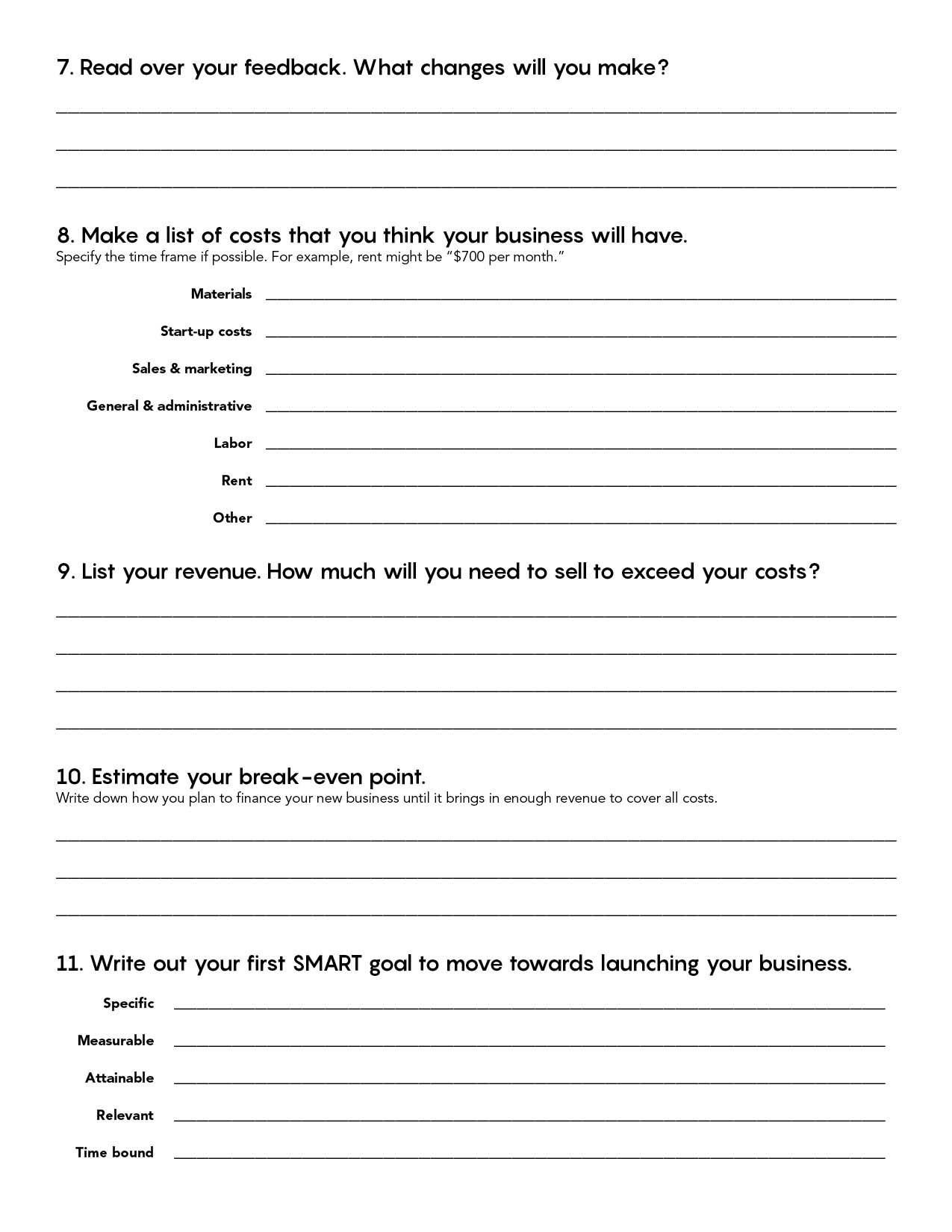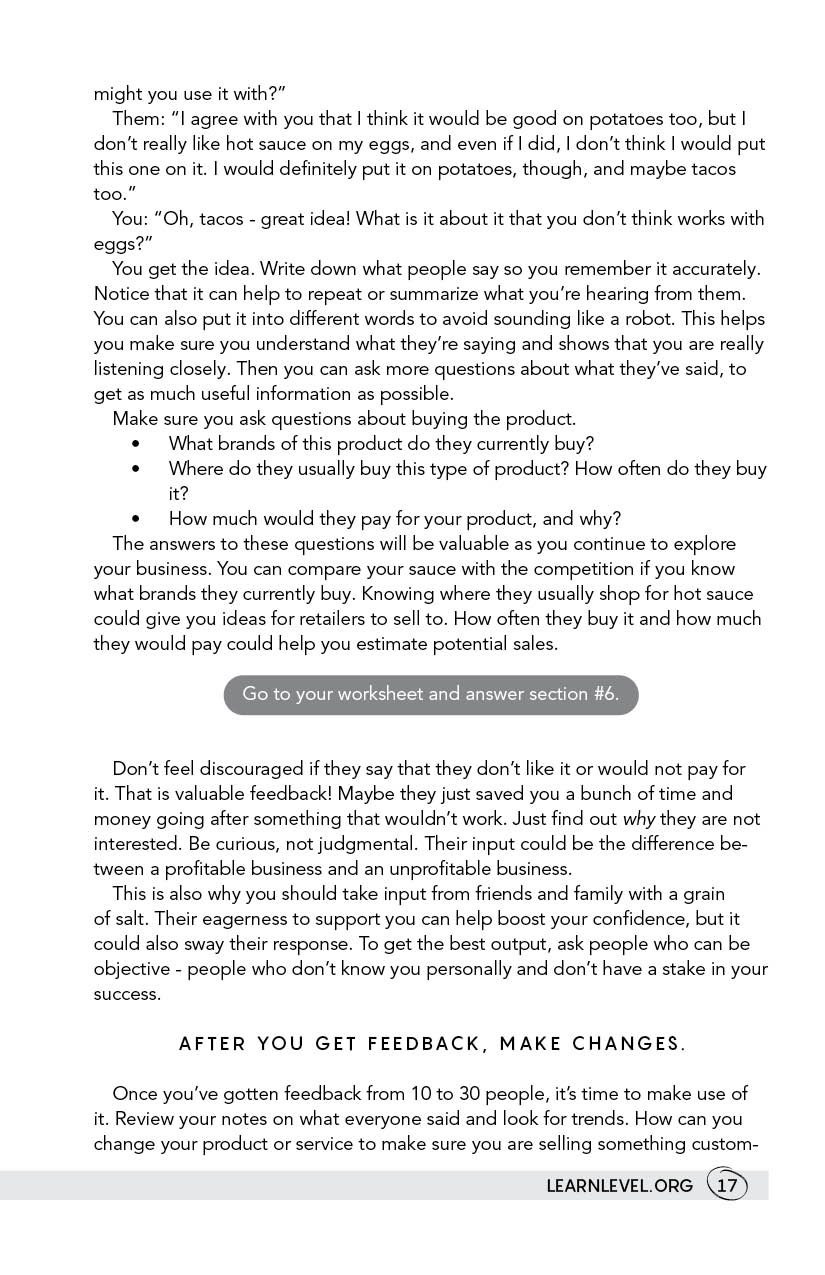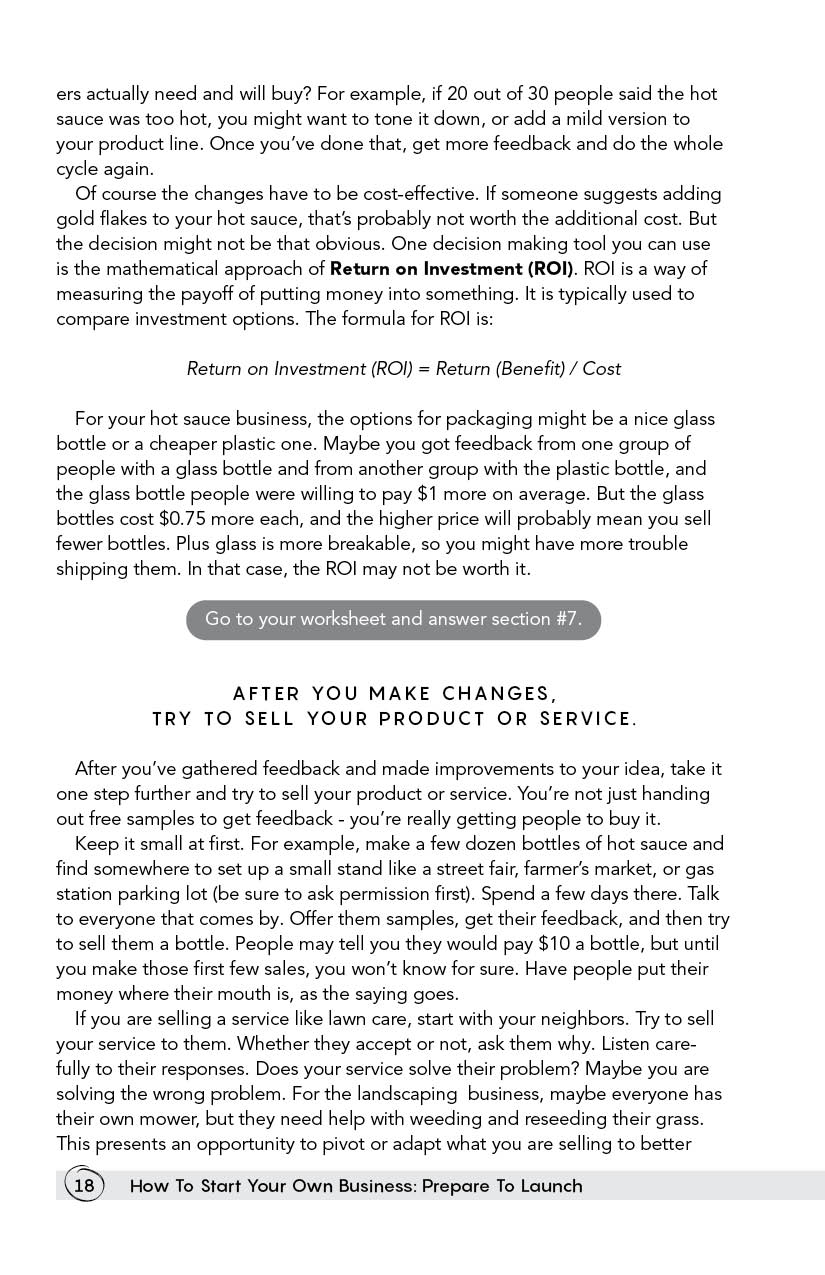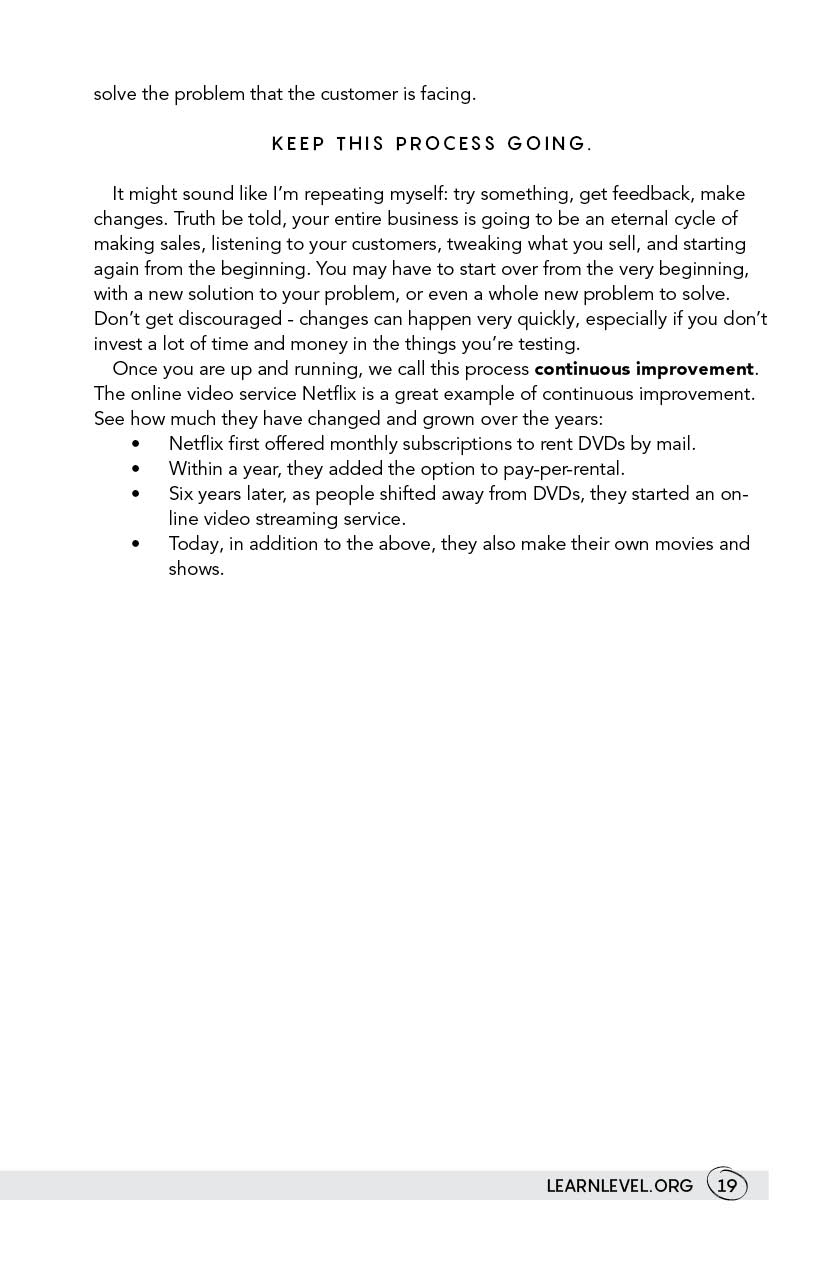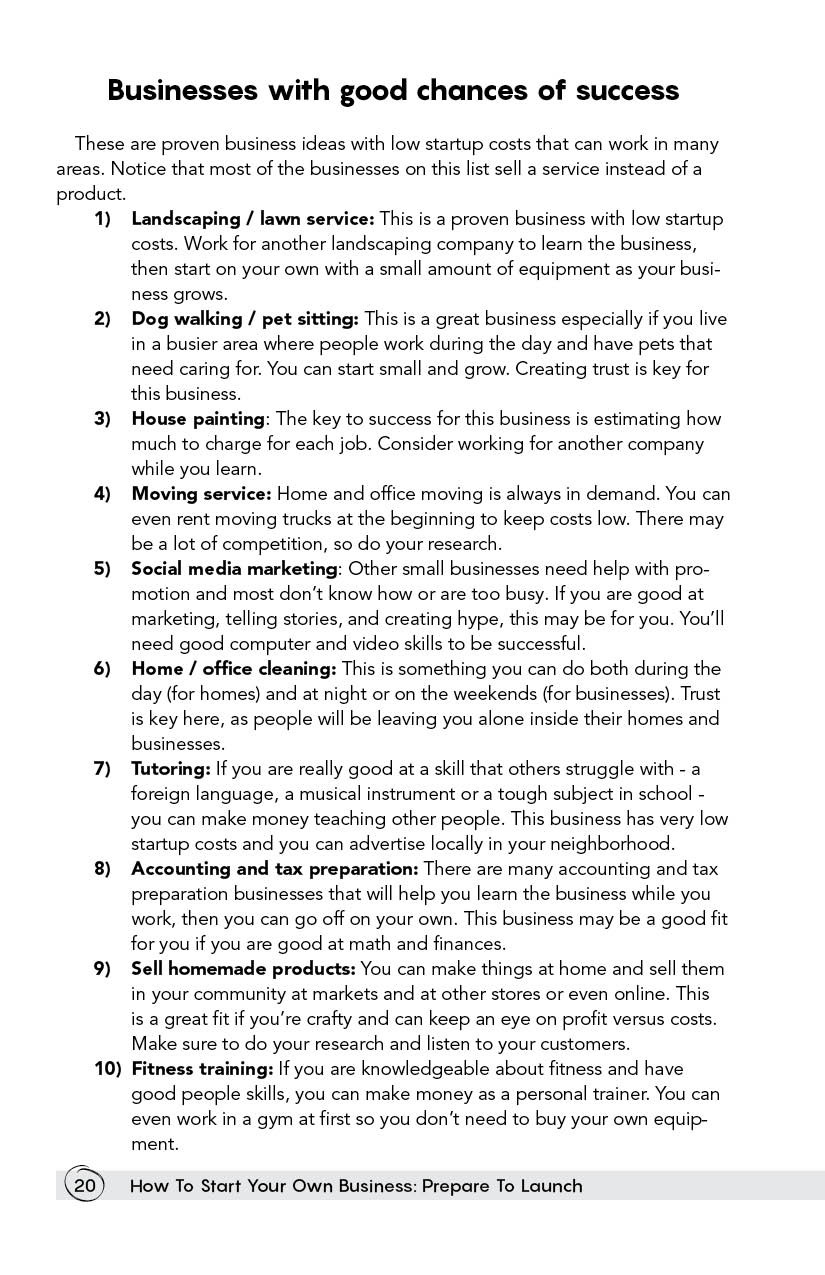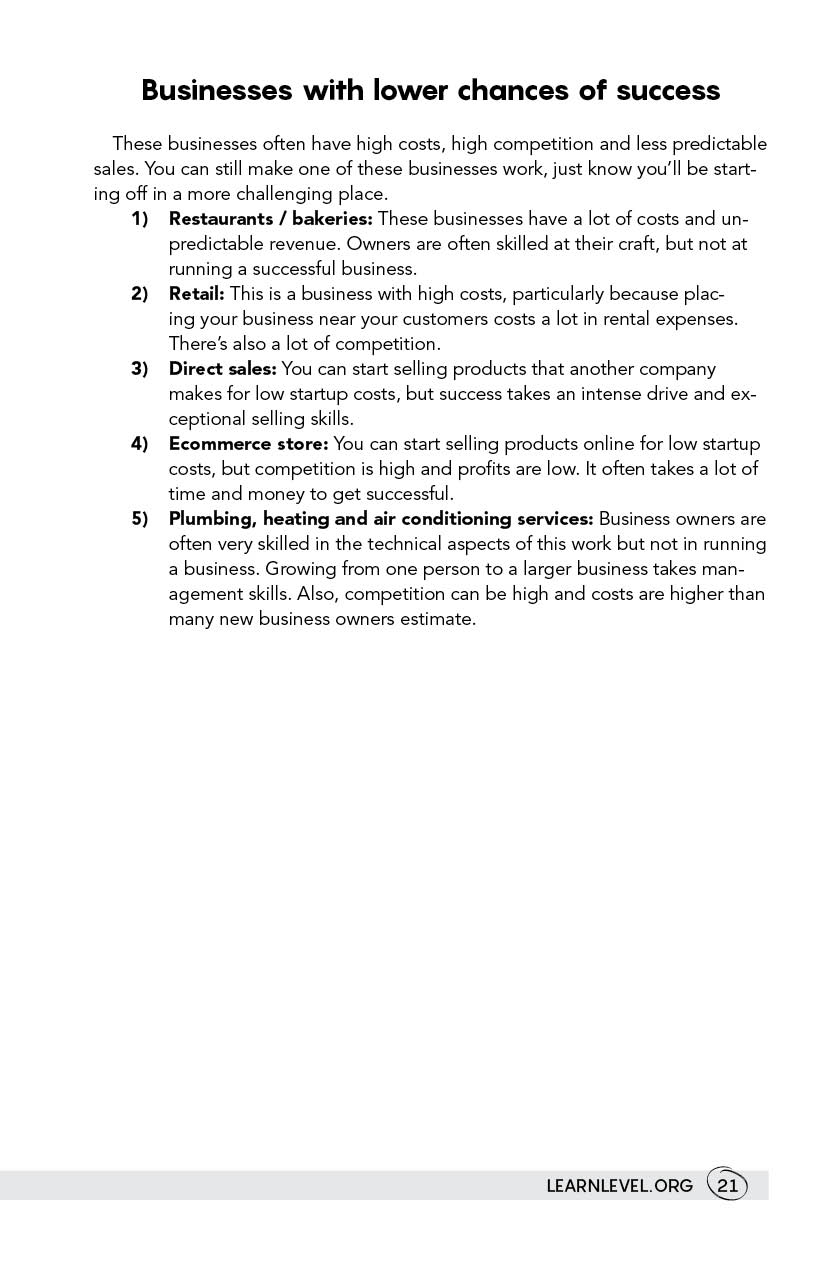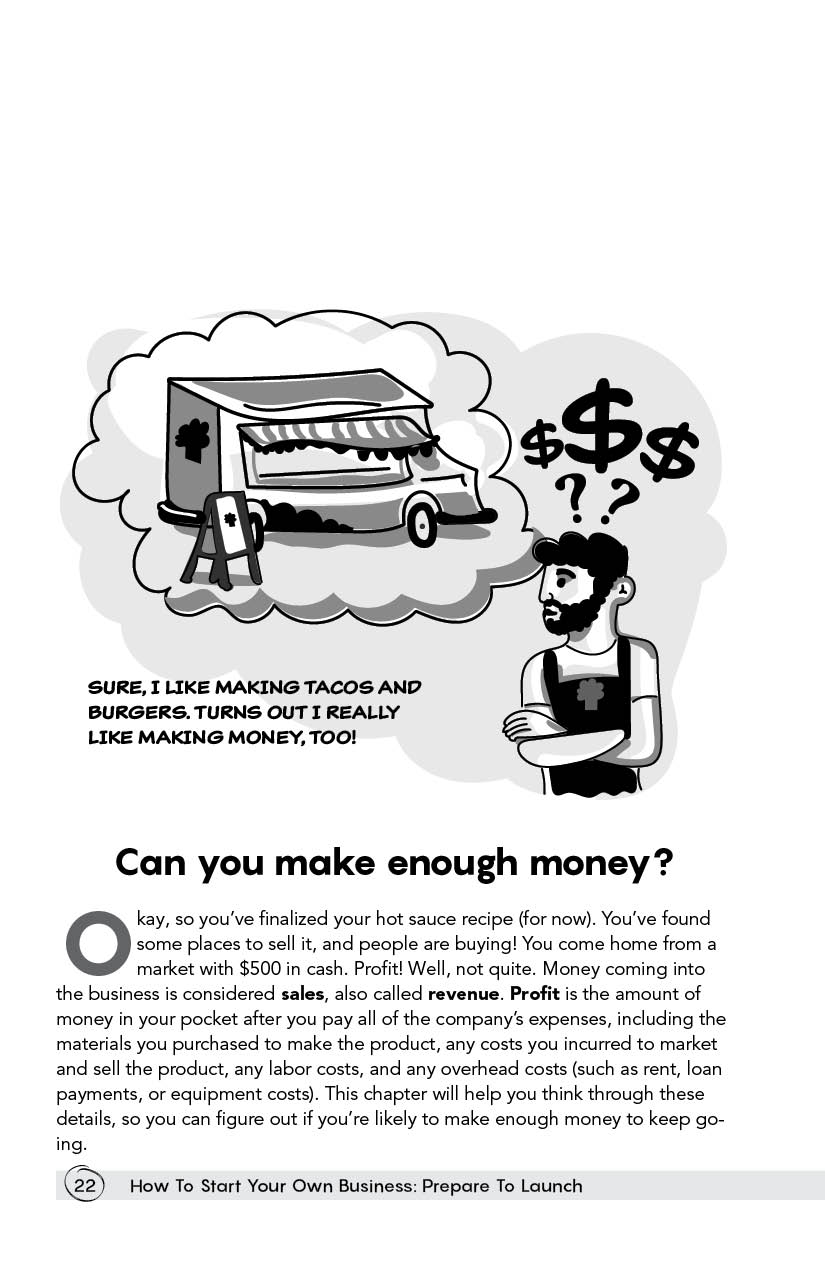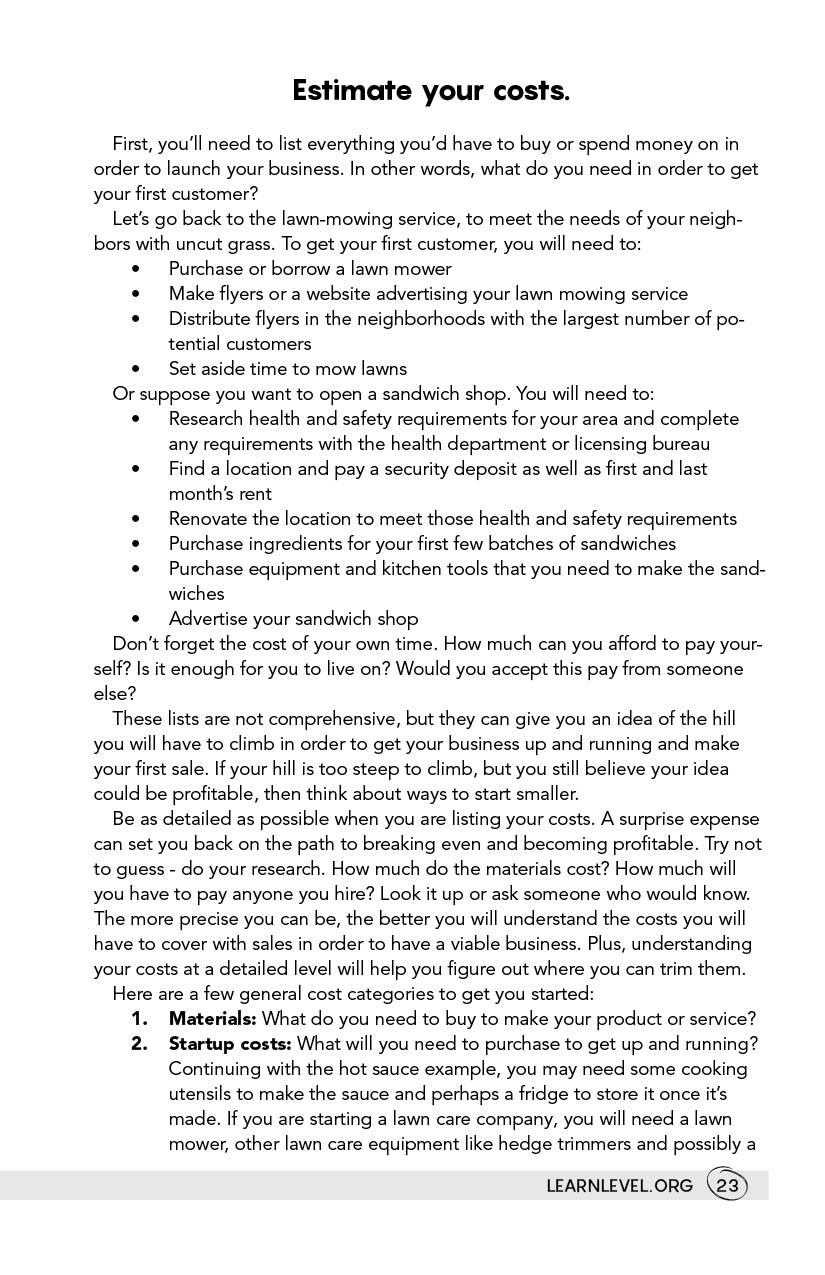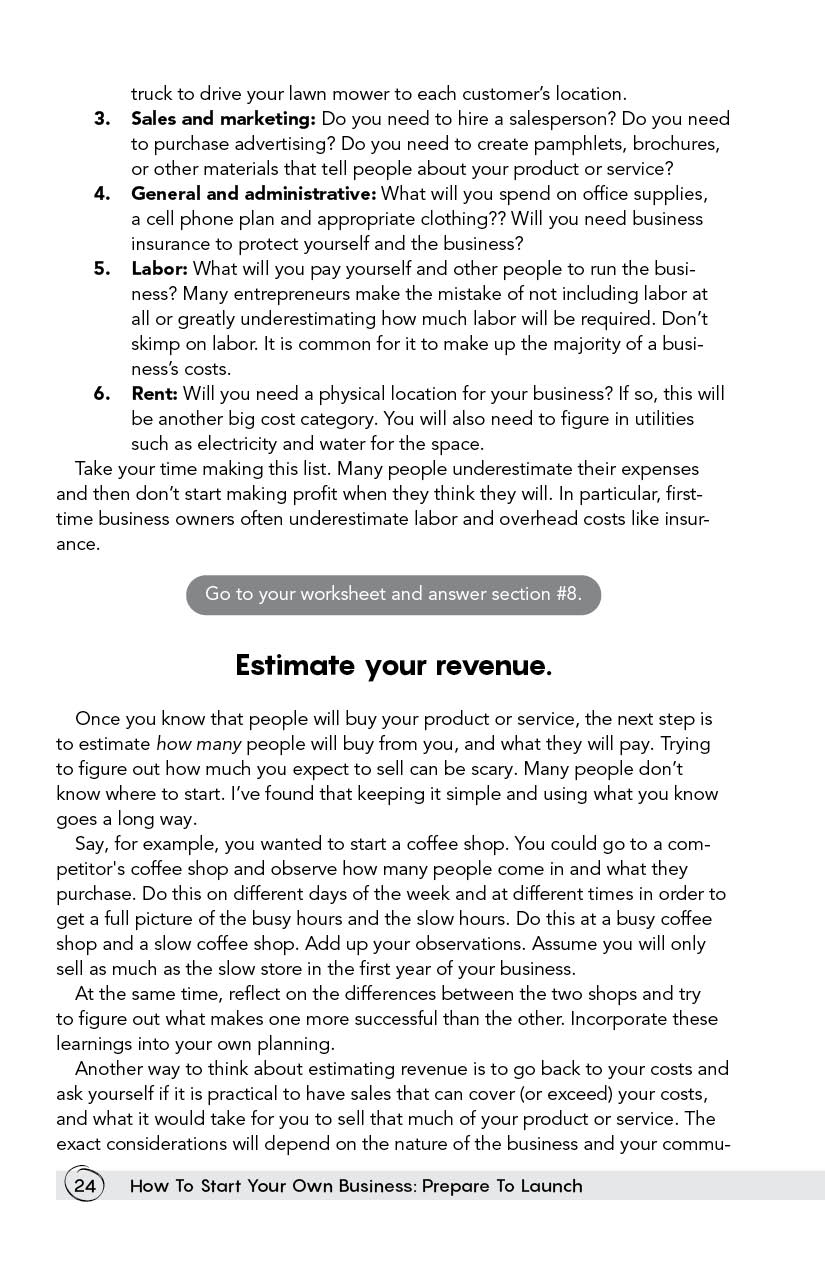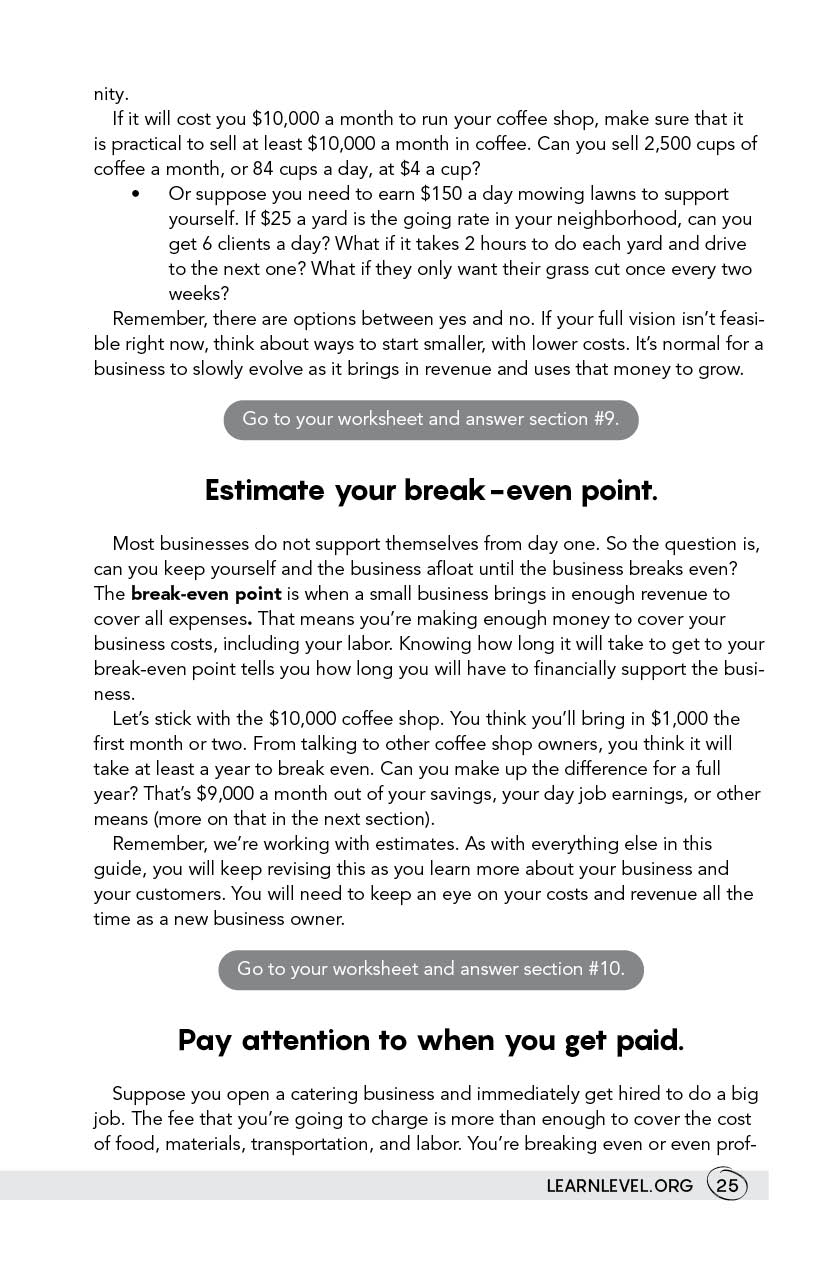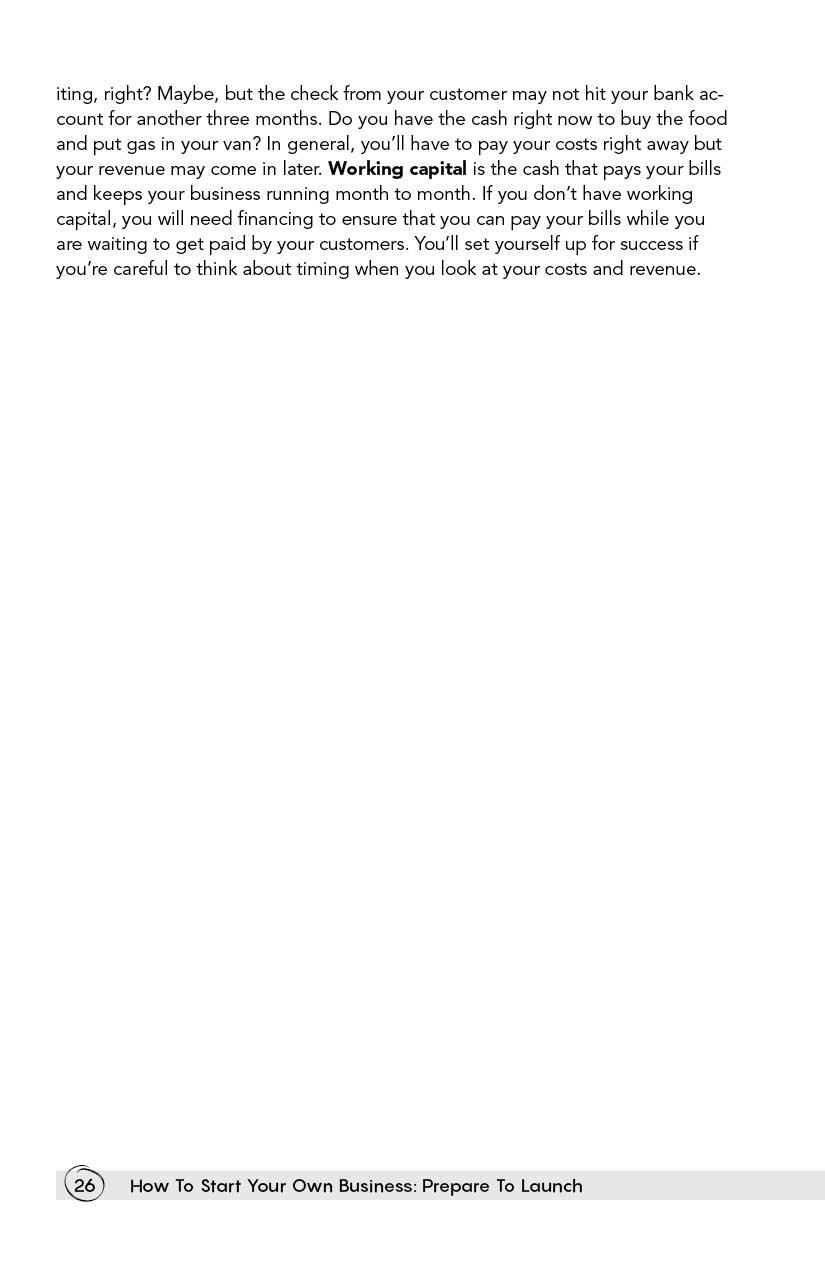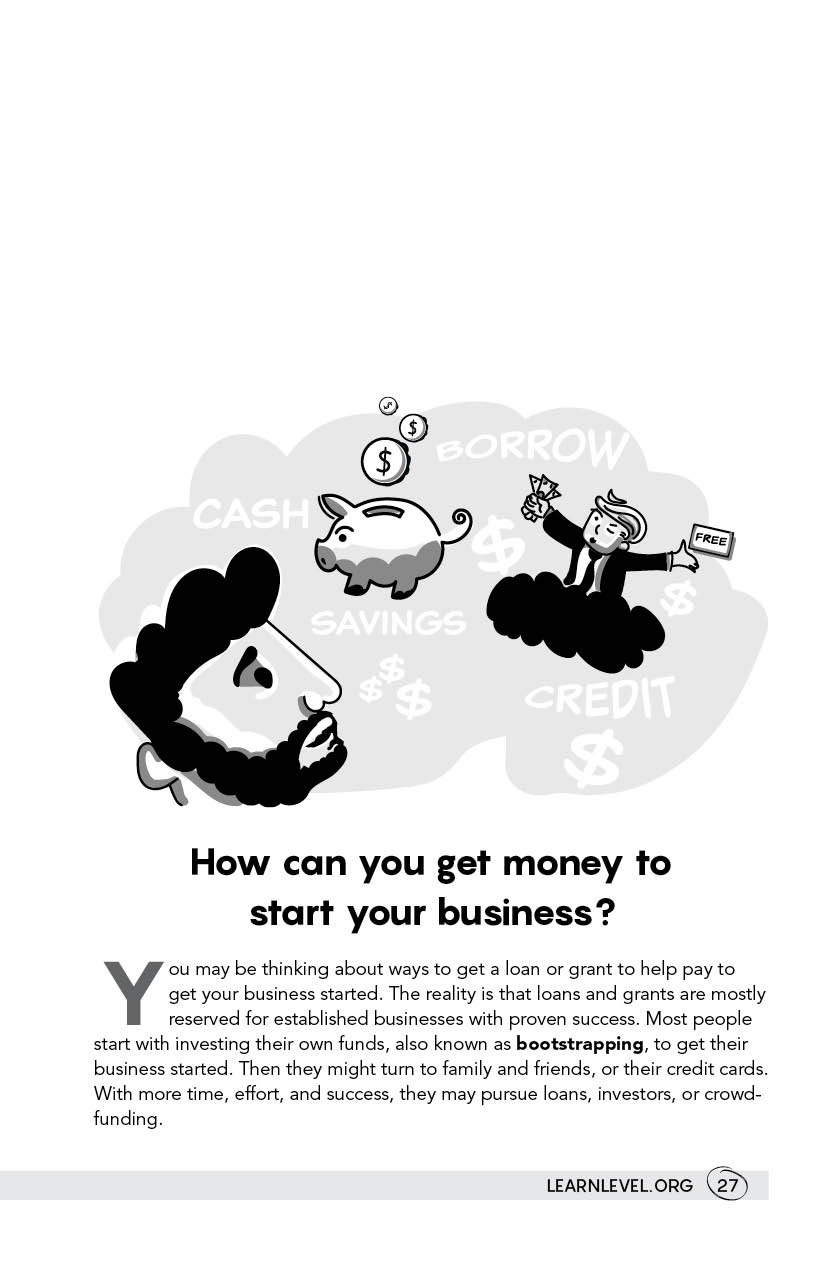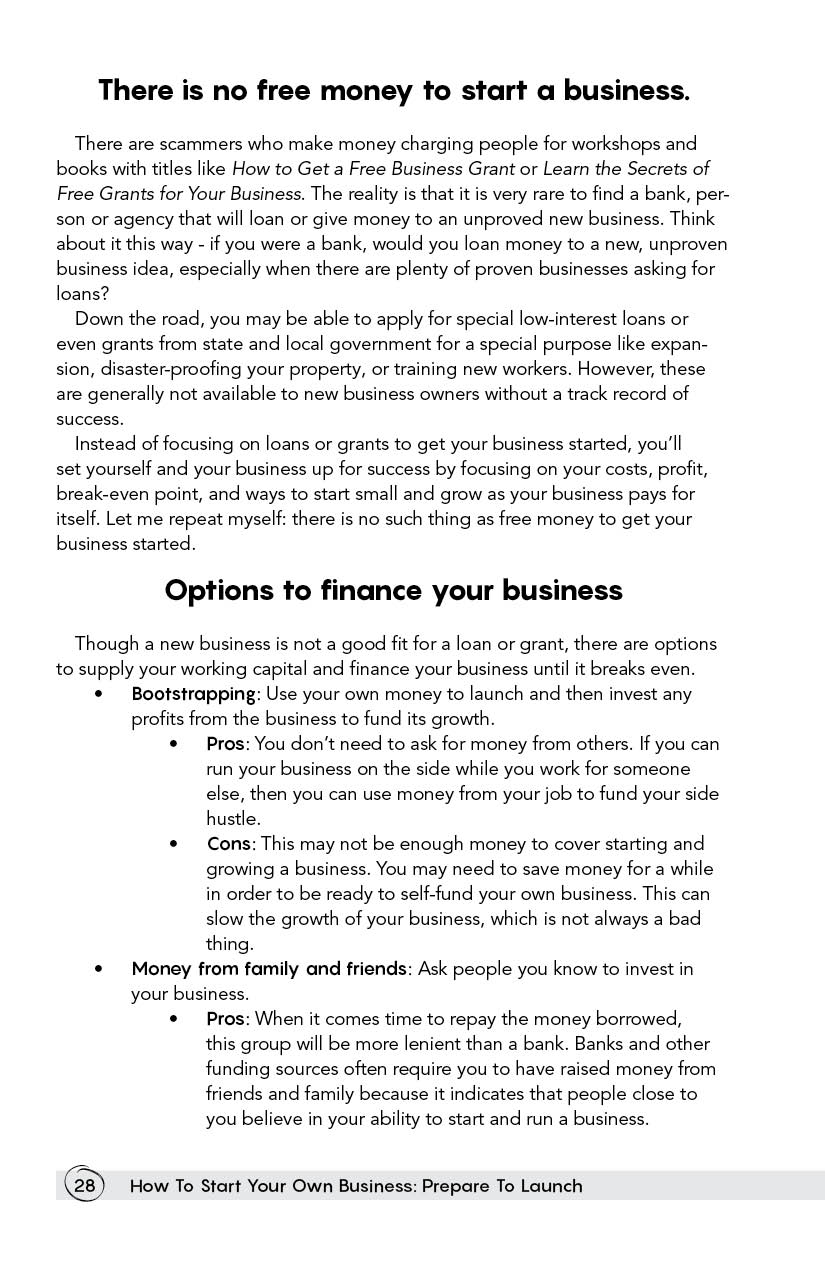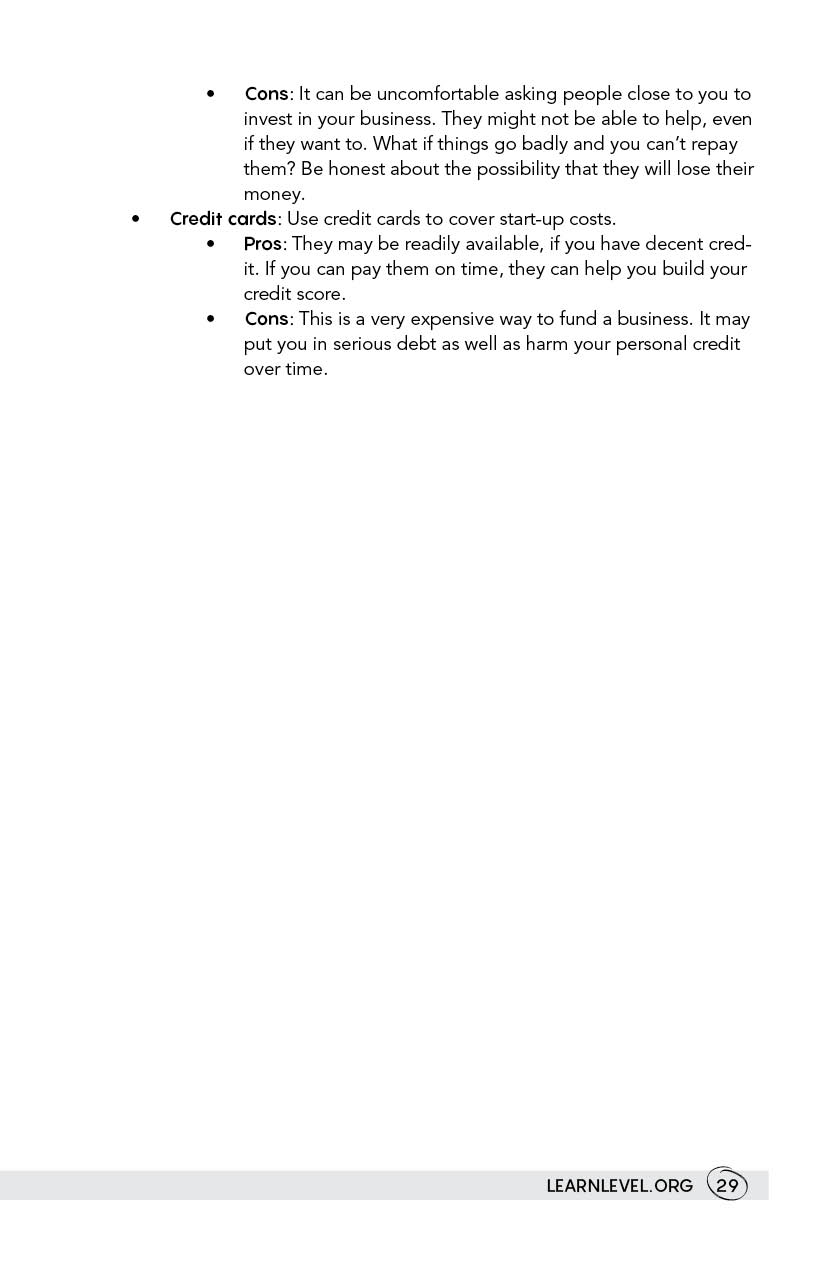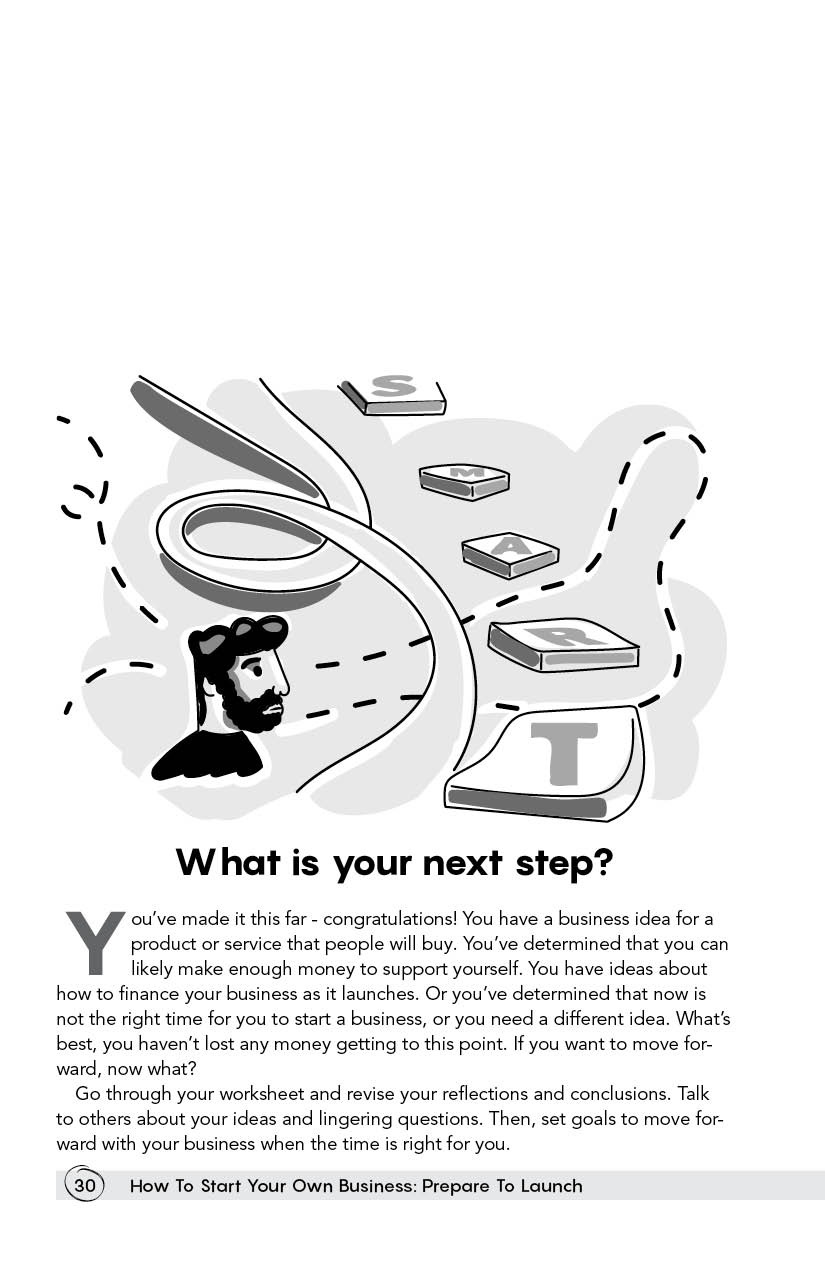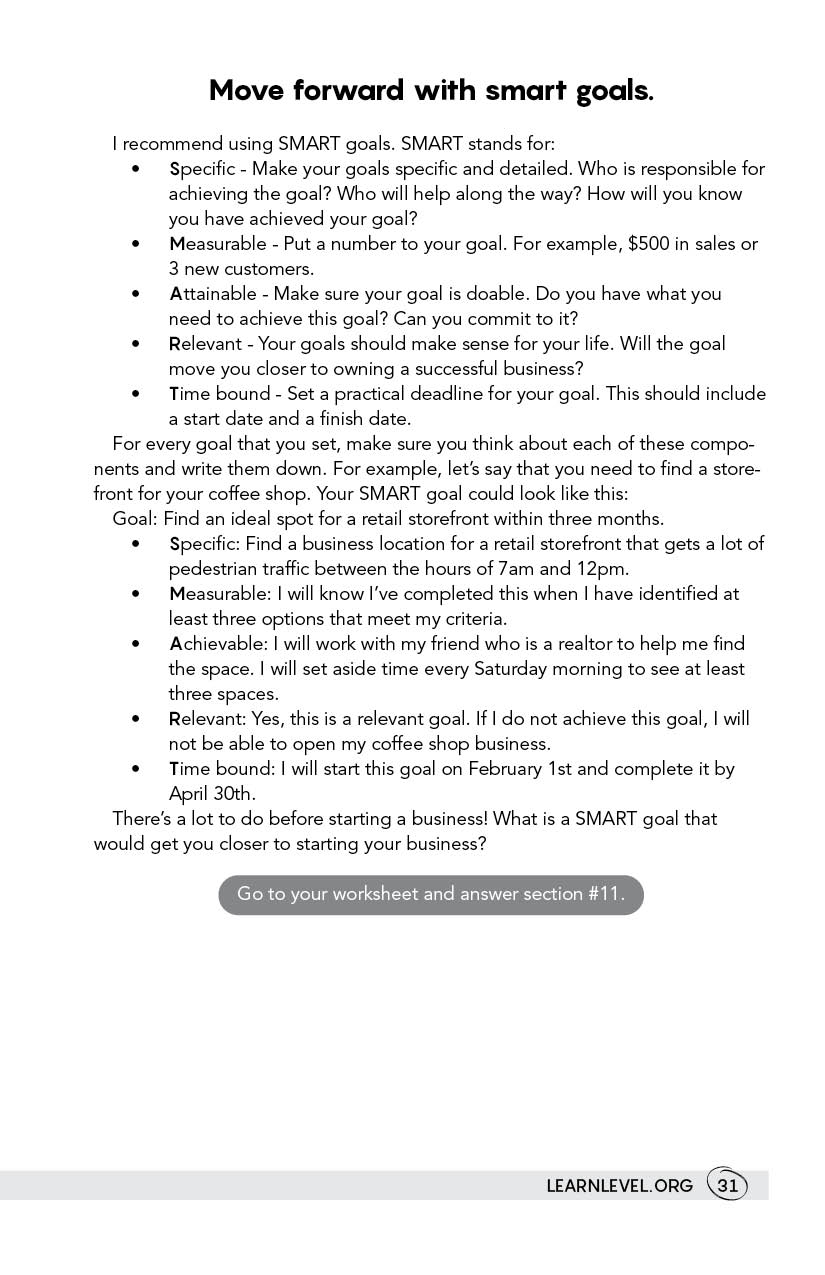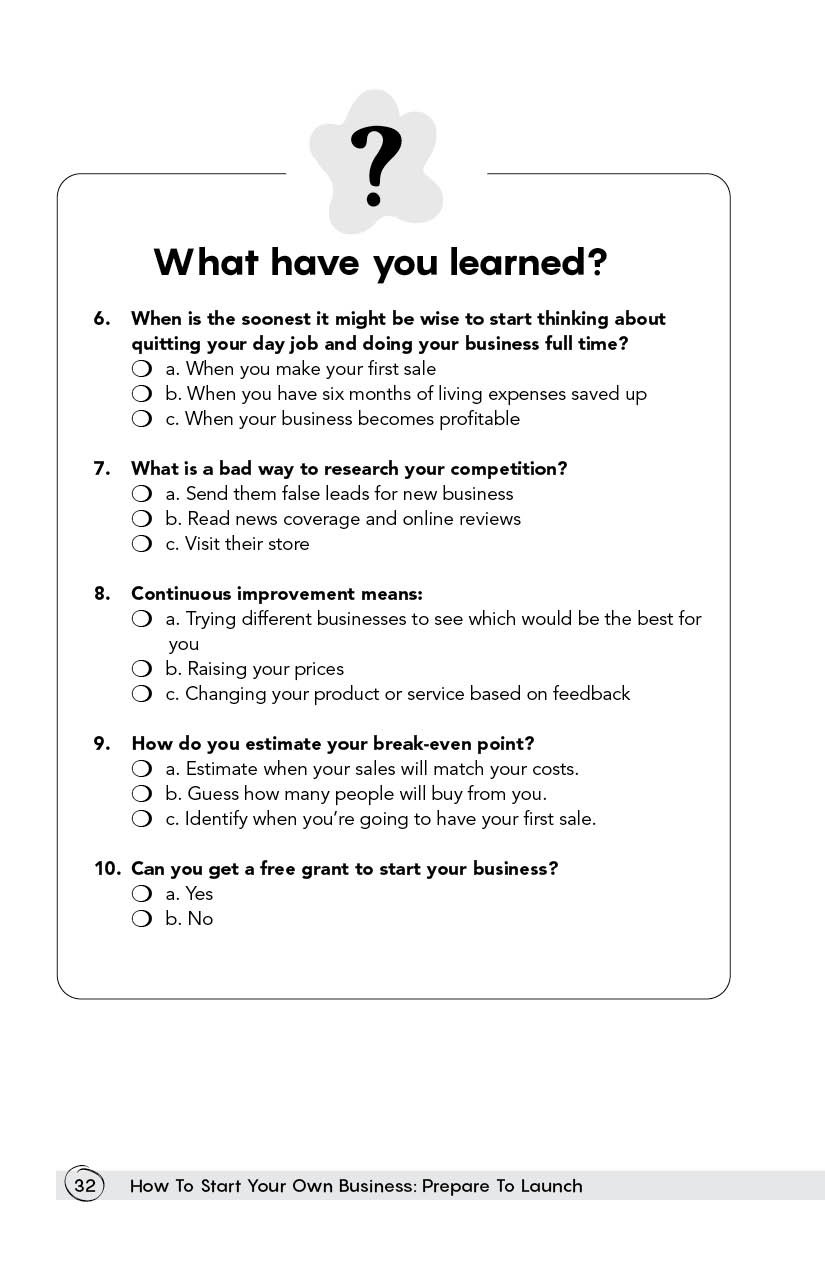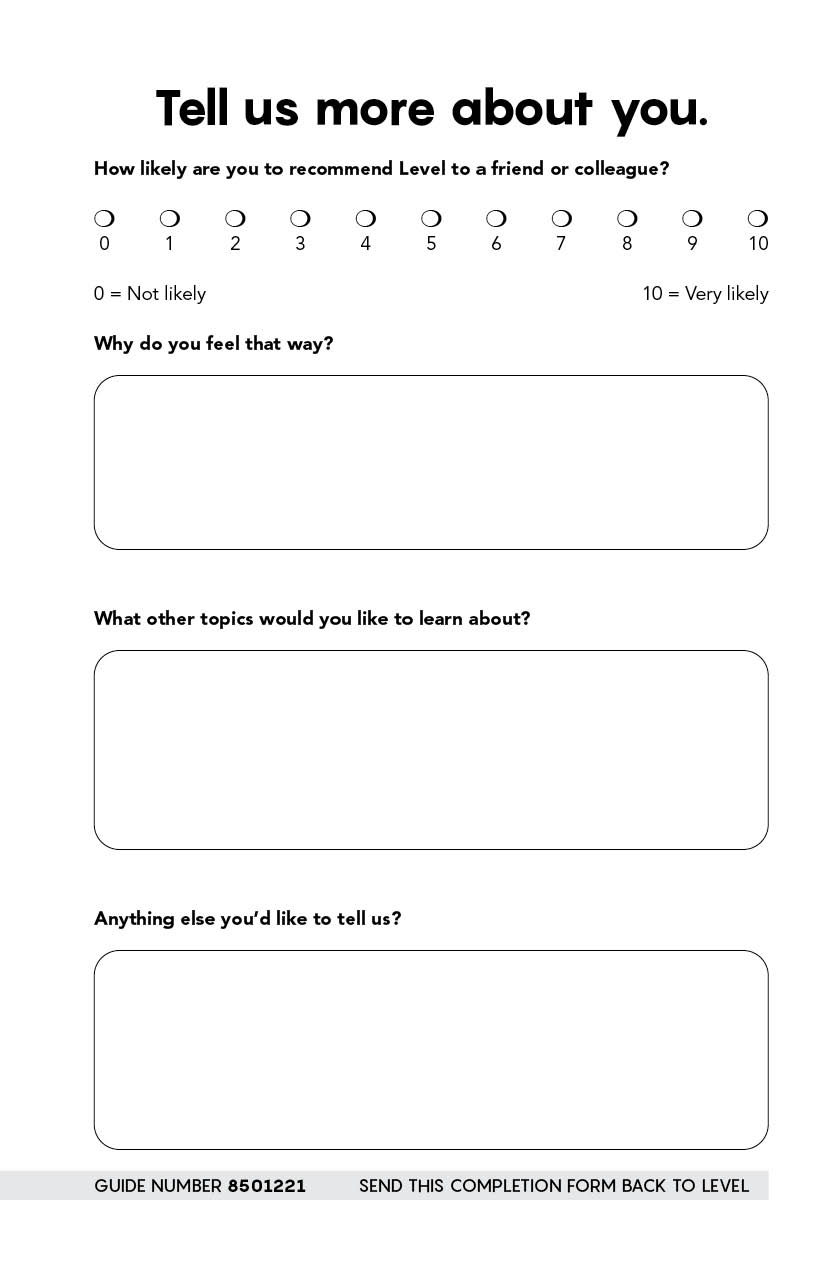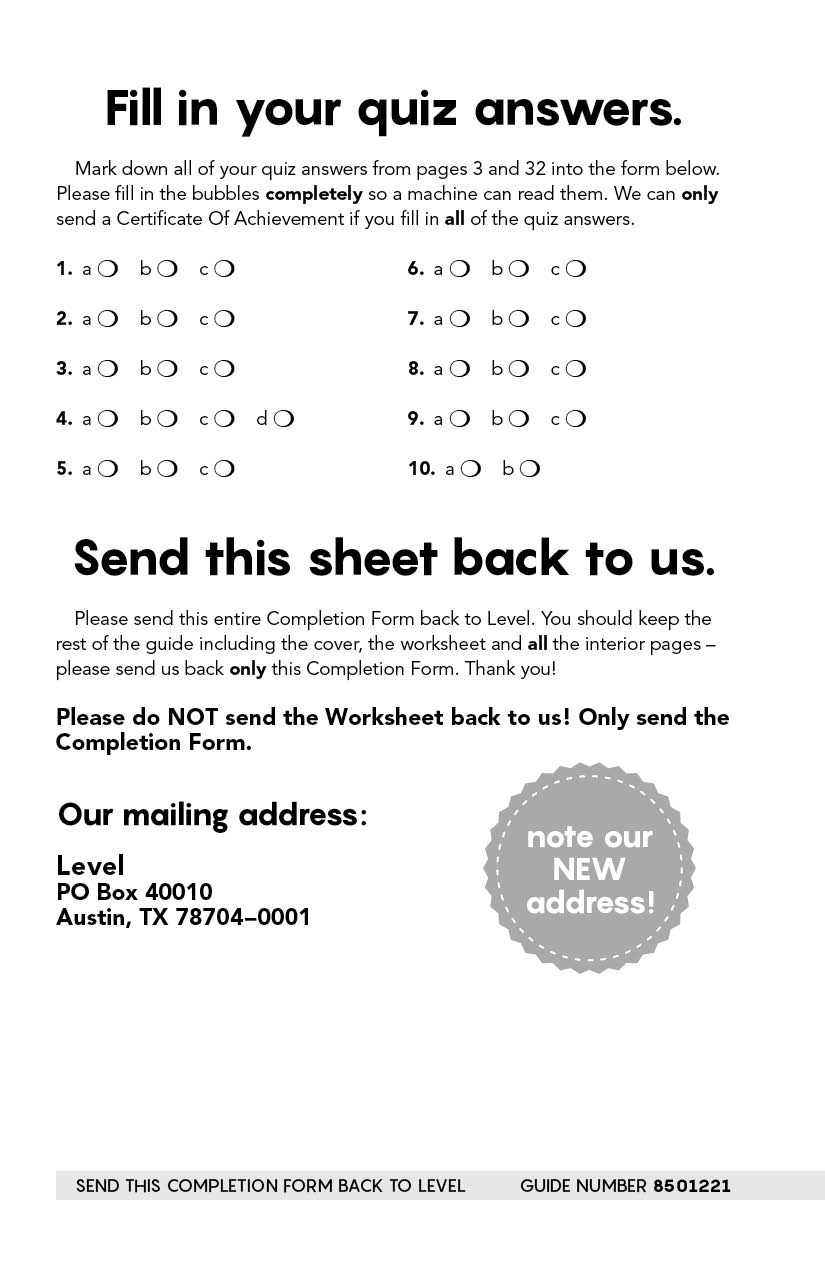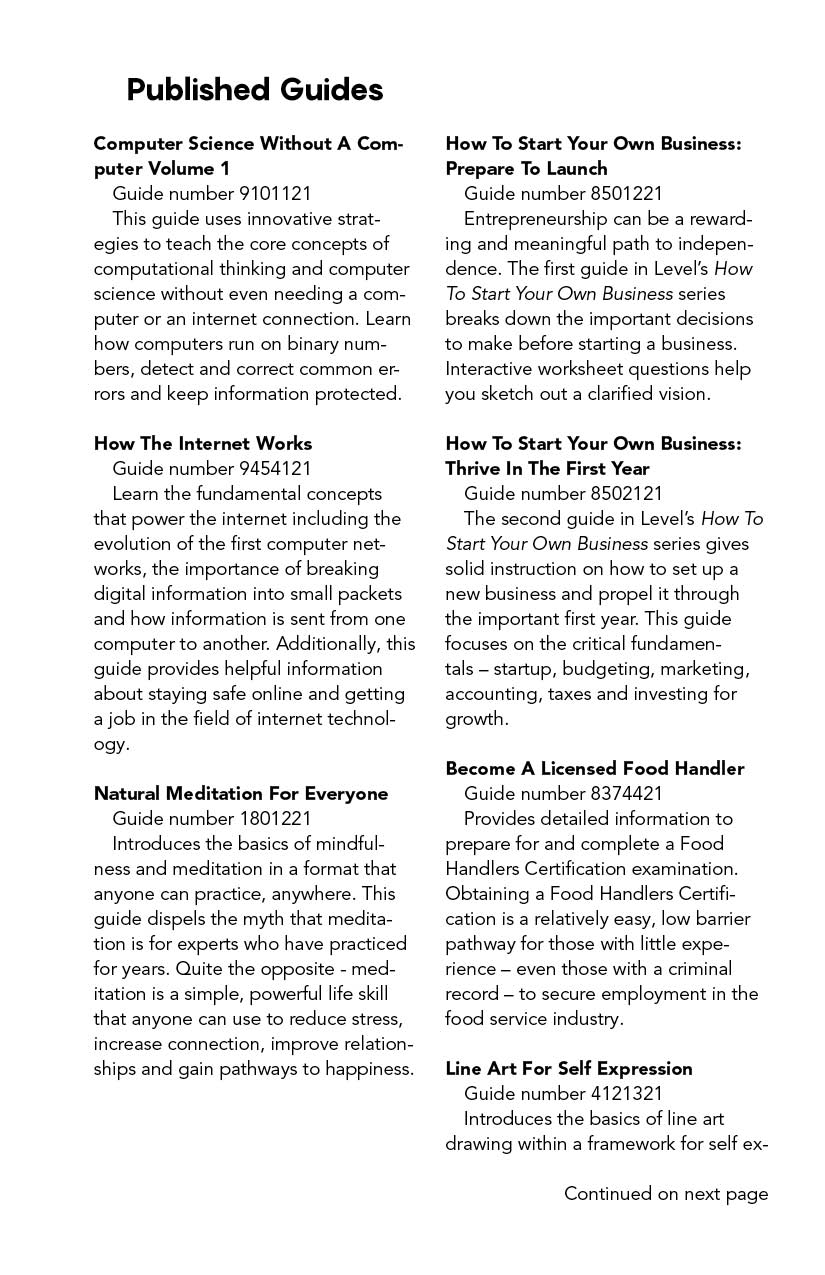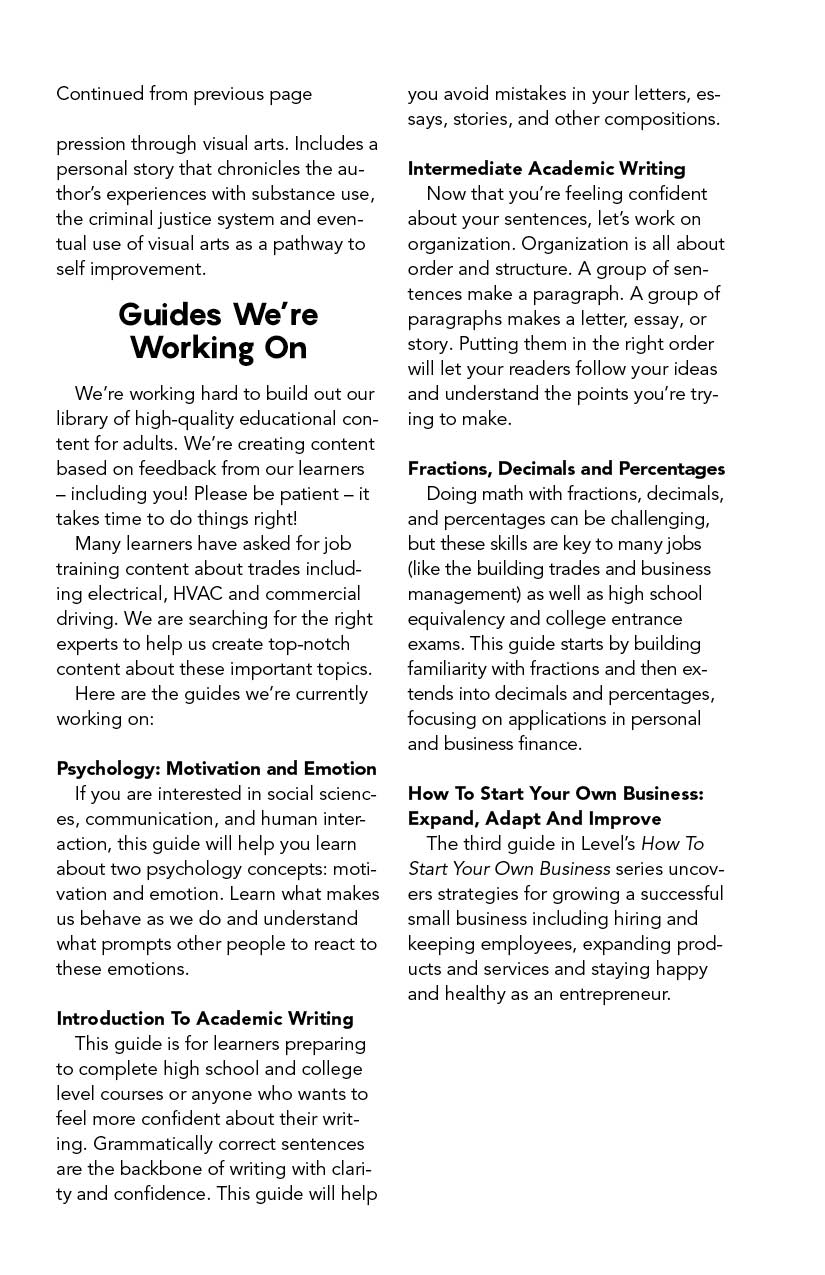I use this guide constantly to motivate and inspire me to achieve my dreams and goals of becoming a successful entrepreneur. I related to the hard work and the pride you feel when you see your business succeeding. It motivates me and encourages me to not give up on my dreams of starting my own business.
How To Start Your Own Business: Prepare To Launch
Entrepreneurship can be a rewarding and meaningful path to independence. The first guide in Level’s How To Start Your Own Business series breaks down the important decisions to make before starting a business. Interactive worksheet questions help you sketch out a clarified vision.
What they'll learn:
- Evaluate and increase your readiness to start a business
- Understand the trade-offs between having a job and starting a business
- Learn about product-market fit and how to test your concept with prospective customers
- Understand the benefits of listening to your customers and continuous improvement
- Discover the types of businesses that are most likely to succeed
- Estimate your costs, revenue and break-even point
Guide includes:
Schedule
Self-guided - learners complete at their own paceGuide length
44 pagesTime to complete
~10 hoursWhat is Level?
Level is a popular prison education program that offers career training and personal development. Level has a unique approach that can reach nearly any person at any prison, even those in high security or solitary confinement. 6,202 people in prison have spent 81,950 hours using the Level program inside 1,010 prisons across the country.
Testimonials for this guide:
- Miguel, incarcerated in California
I found your entrepreneurship guide to be very informative, especially to those of us with little knowledge of how to start and maintain a legal business. I learned about unfamiliar terms like product-market fit, unmet needs, buyer persona, ROI, continuous improvement, break-even point and working capital. Thank you.
- Branden, incarcerated in Nevada
I've used this entrepreneurship guide frequently and continue to do so, as I am making a list to track my ideas, cost, etc. It is easy to read and easy to follow. I like that it's almost a step-by-step guide. What Level does is such an inspiration, keep up the amazing work! Thank you for this opportunity.
- Kimberly, incarcerated in Wisconsin
